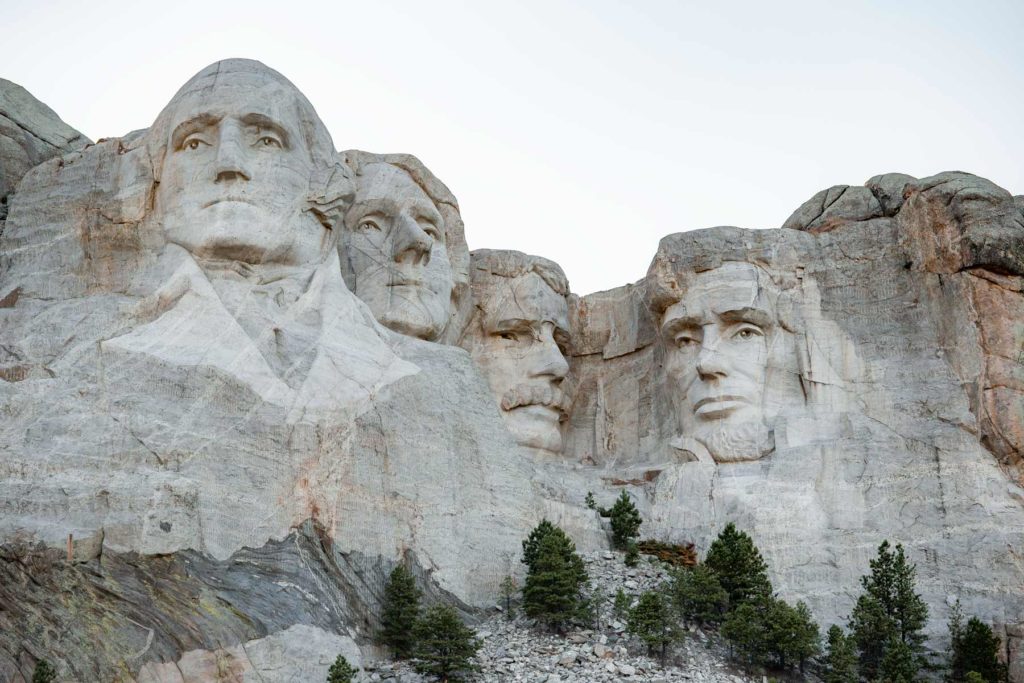
Article Summary: Historic Sites In South Dakota
Historic Sites In South Dakota. More Than Just Parks has 15 incredible must-see sites for you to visit.
I’ve been to so many of these amazing places since retiring from teaching in 2018. Did I mention that I taught history? I spent a lifetime teaching about the history behind these momentous sites. Then I got to see them firsthand. And now I’m sharing the stories of these incredible places with you. It doesn’t get any better than that!
I’m going to give you my list of the Top 15 Historic Sites In South Dakota that you’ll want to see.
To be clear, this list includes national park sites (as in sites managed by the National Park Service) as well as national parks. It also includes sites not managed by the National Park Service. After all, we’re more than just parks.
One book that you might want to pick up before making your trip to the Mount Rushmore State is: Greater Than a Tourist- South Dakota: 50 Travel Tips from a Local by Max Hunloff.
Without further ado, let’s dive in.
Table Of Contents: Historic Sites In South Dakota
Historic Sites In South Dakota
- Top 15 Historic Sites In South Dakota
- Top 10 Historic Sites In South Dakota
- The Top 5 Historic Sites In South Dakota
- 5. Wounded Knee National Historic Landmark
- 4. Lewis & Clark National Historic Trail
- 3. Jewel Cave National Monument
- 2. Badlands National Park
- Journey With Us To The Badlands
- 1. Mount Rushmore National Memorial
- Top 5 Things to Do at Mount Rushmore
- List Of Historic Sites In South Dakota
- Why Trust Us About Historic Sites In South Dakota?
- Meet The Parks Brothers
- We Hope You’ll Follow Our Journey
Top 15 Historic Sites In South Dakota
15. Fort Sisseton Historic State Park
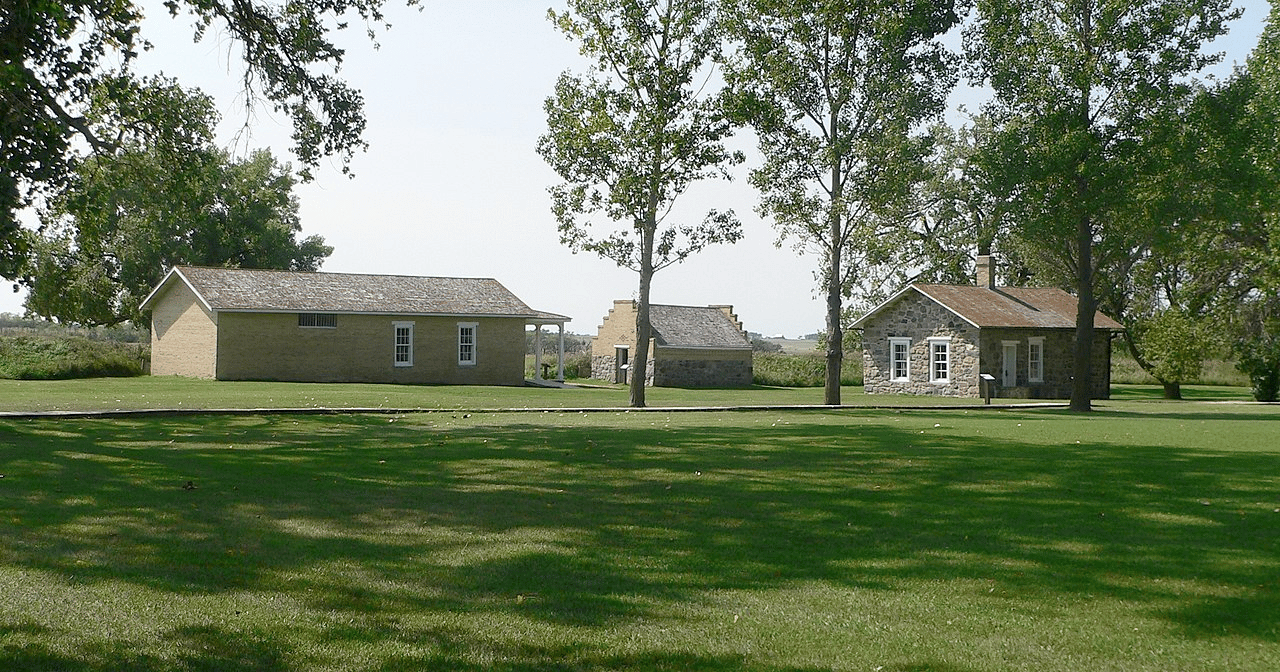
South Dakota is famous for its Native American culture, exciting festivals, and important monuments. The state is home to the renowned Mount Rushmore monument that is often featured in Hollywood movies. More Than Just Parks has a list of the 15 Best Historic Sites in South Dakota for you to see.
We’re kicking off our list with a place which, if you enjoy military history, you’ll love. At #15, we have Fort Sisseton Historic State Park.
Located in northeastern South Dakota, it was established in 1864 as a military post to protect settlers and travelers from Native American raids during the Dakota War of 1862. The fort was named after the nearby Sisseton Indian Reservation, which was established in 1863.
The construction of the fort began in 1864 and was completed in 1867. It consisted of several buildings, including barracks, officers’ quarters, a hospital, and a guardhouse.
The fort was garrisoned by various companies of the 10th Regiment of Infantry, as well as by troops of the 1st, 5th, and 6th Regiments of Cavalry. It was one of the largest military posts in Dakota Territory and played a significant role in the settlement of the region.
A Supply Depot For Military Expeditions
The fort was also used as a supply depot for military expeditions against the Sioux and other Native American tribes in the area. During the 1870s, the fort served as a base for the Black Hills Expedition, which was sent to explore the region after gold was discovered there.
The fort was decommissioned in 1889 and sold to the state of South Dakota in 1895. It was used as a summer camp for the South Dakota National Guard until 1935, after which it fell into disrepair.
In 1959, the fort was designated as a state park and efforts were made to restore and preserve the remaining buildings. Today, the park includes several restored buildings, including the officers’ quarters, barracks, and guardhouse.
Visitors can take guided tours, participate in living history demonstrations, and explore the park’s trails and recreational facilities.
Things To Do
Historic Fort Sisseton Historic State Park in South Dakota offers several activities and attractions for visitors:
- Historic Fort Tours: Visitors can take guided tours of the restored fort, which was built in the mid-1860s.
- Living History Programs: During special events, reenactors bring the fort to life, demonstrating various aspects of military and civilian life from the late 1800s.
- Fishing and Boating: The park has several lakes for fishing and boating, including Sisseton Lake, where visitors can catch a variety of fish species.
- Hiking and Nature Trails: There are several trails for hiking and exploring the park’s diverse natural landscapes, including prairies, forests, and wetlands.
- Camping: The park offers camping options, including modern campsites, rustic cabins, and group camping facilities.
- Wildlife Viewing: The park is home to a wide variety of wildlife, including deer, wild turkey, and waterfowl, which visitors can observe and photograph.
- Picnicking: The park has several picnic areas, where visitors can enjoy a meal and take in the beautiful scenery.
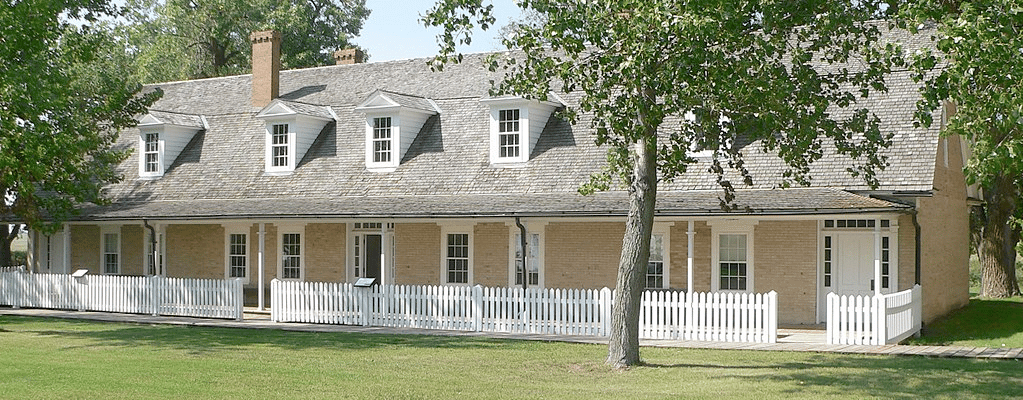
14. The Corn Palace
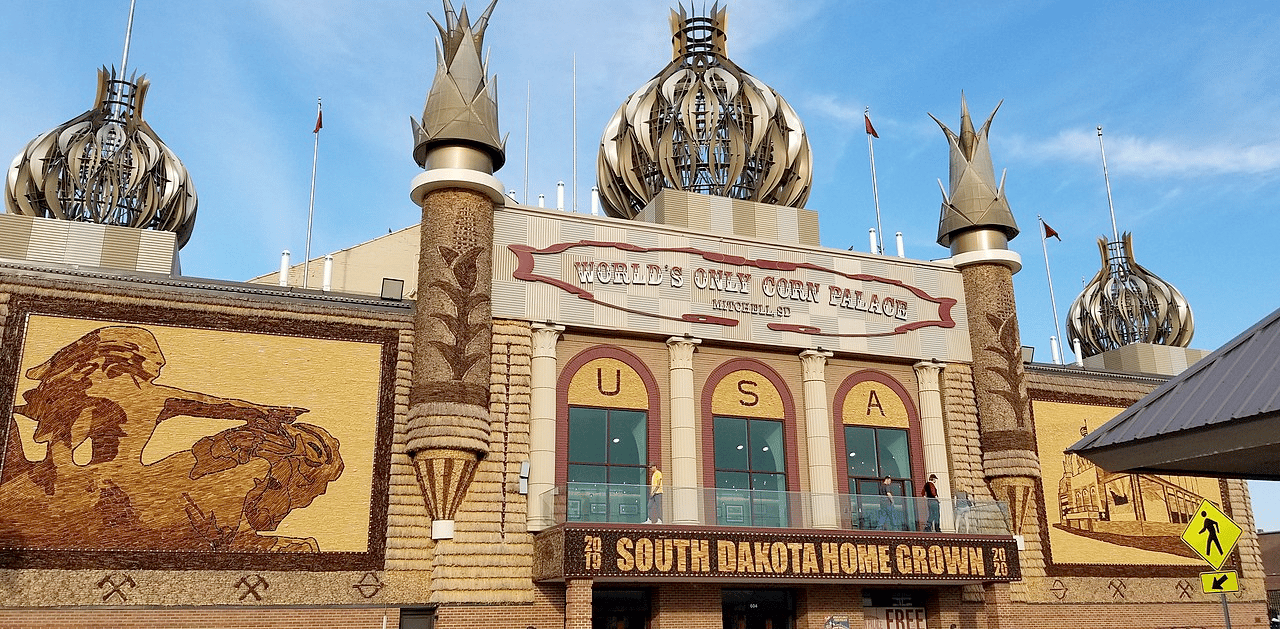
You’ll never see another place like our next historic site. It’s the The Corn Palace! A popular tourist attraction and a historic landmark located in Mitchell, South Dakota the Corn Palace was first built in 1892 as a way to showcase the rich agricultural heritage of the region, particularly the abundance of corn.
The original Corn Palace was a simple structure made of locally sourced materials, such as cornstalks, grasses, and other grains. It was built as part of the town’s annual harvest festival and was intended to celebrate the bounty of the region’s crops.
Over the years, the Corn Palace has been rebuilt several times, with each iteration becoming more elaborate and impressive than the last. Today, the building features intricate murals made entirely of corn and other grains, depicting scenes of local history and culture.
The Corn Palace has been an important part of South Dakota’s cultural heritage for over a century. It has been visited by numerous dignitaries and celebrities, including Presidents Calvin Coolidge, Franklin D. Roosevelt, and Dwight D. Eisenhower.
In addition to its role as a historic landmark, the Corn Palace also serves as a community center and event venue. It hosts a variety of concerts, sporting events, and other cultural events throughout the year, attracting visitors from all over the world.
13. National Music Museum
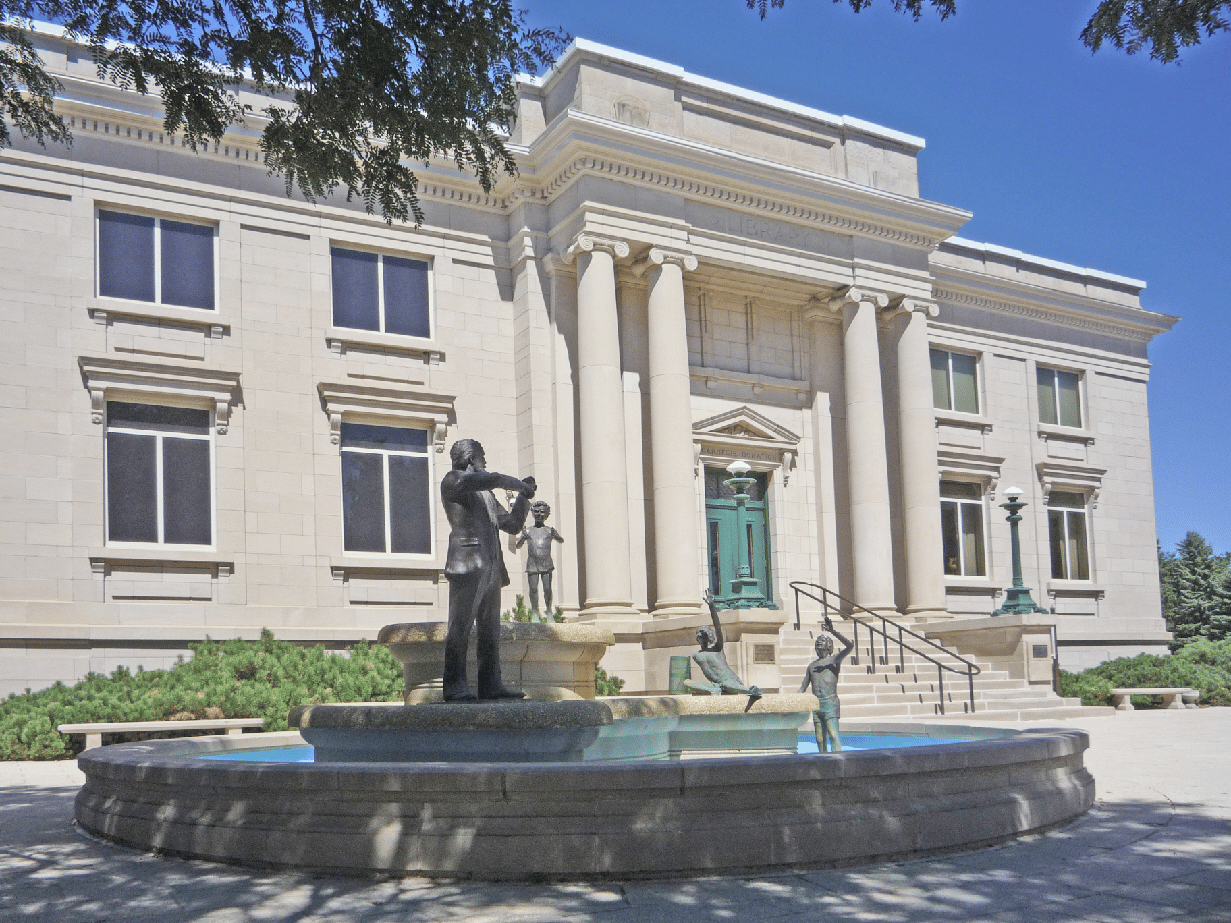
At #13 on our list of the Best Historic Sites In South Dakota is The National Music Museum.
The National Music Museum is located in Vermillion, South Dakota. It’s one of the world’s largest collections of musical instruments. It was founded in 1973 by a group of music enthusiasts led by Arne B. Larson, a professor of music at the University of South Dakota.
The museum’s collection includes more than 15,000 instruments from all over the world, spanning thousands of years of human history. It includes instruments such as pianos, organs, harpsichords, guitars, violins, and many others.
Some of the most notable instruments in the collection include: a Stradivarius violin, a 16th-century Flemish harpsichord, and a rare 18th-century Chinese pipa.
The National Music Museum’s collection was originally housed in a small space on the University of South Dakota’s campus. However, as the collection grew in size and importance, a new museum building was constructed in downtown Vermillion in 1999.
Today, the National Music Museum is a world-renowned institution dedicated to preserving and showcasing the history of musical instruments. It is home to a number of educational programs and initiatives, including lectures, concerts, and workshops.
In addition to its permanent collection, the museum also hosts rotating exhibitions that showcase different themes and aspects of the history of music. These exhibitions have covered topics such as the development of the piano, the history of brass instruments, and the role of music in different cultures.
12. Tatanka
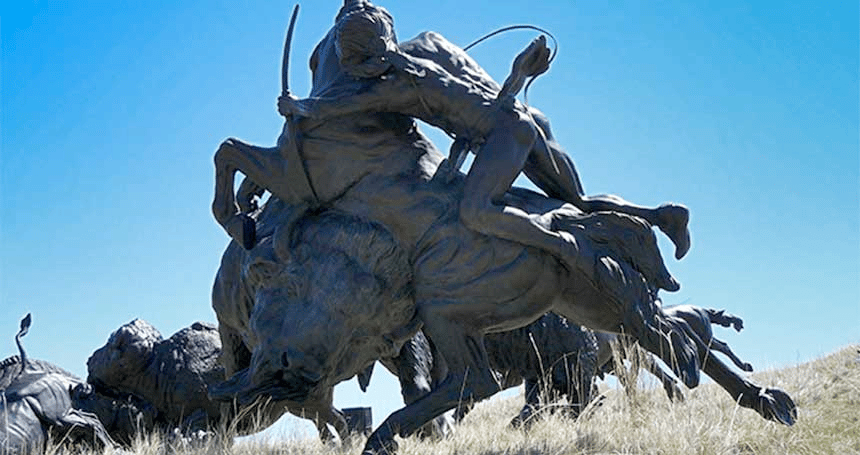
And now for something entirely different. At #12 on our list of the Best Historic Sites In South Dakota is Tatanka: Story of the Bison. It’s a Native American interpretive center located in South Dakota.
The center is dedicated to educating visitors about the history and culture of the Lakota people, with a focus on the significance of the bison (also known as Tatanka) in their way of life.
It features an authentic Lakota encampment, complete with traditional tipis, and it is staffed by Native American interpreters who give presentations throughout the day.
The center offers a variety of educational programs and activities that allow visitors to learn about the history and culture of the Lakota people.
These may include traditional storytelling, demonstrations of traditional arts and crafts, and other interactive activities. Visitors can also learn about the spiritual, economic, and cultural importance of the bison to the Lakota people, as well as the impact of the near-extermination of the bison on the Native American way of life.
Tatanka: Story of the Bison is a unique and important educational resource that provides visitors with a deeper understanding of the history and culture of the Lakota people.
11. City Of Presidents
If you love American history then our next site is a real treat. It’s unlke anything you’ve ever seen before too. At #11 on our list of the Best Historic Sites In South Dakota is the City of Presidents.
The City of Presidents is a unique public art project located in Rapid City, South Dakota. The project features a series of life-sized bronze statues of all the U.S. Presidents, from George Washington to Joe Biden, displayed throughout the city’s downtown area.
The project was conceived in 2000 by a group of local business leaders who wanted to create a way to attract tourists to Rapid City and celebrate the rich history of the United States. The first statue, a bronze sculpture of George Washington, was unveiled in 2001.
Since then, a new statue has been added for each subsequent U.S. President, with the most recent being Joe Biden’s statue unveiled in August 2021. Each statue is created by a different artist and features the President in a unique pose or setting that is significant to their life or presidency.
The City of Presidents has become a popular tourist attraction and an important part of Rapid City’s cultural landscape. Visitors can take self-guided walking tours of the statues, and the city also offers guided tours that provide more information about each President and their significance in American history.
In addition to being a tourist attraction, the City of Presidents has also become an important educational resource for the community. The project’s organizers have worked with local schools and educators to create educational materials and activities that help students learn more about American history and the U.S. Presidency.
Top 10 Historic Sites In South Dakota
10. USS South Dakota Battleship Memorial

We’re on to the Top 10 Historic Sites In South Dakota. At #10 is the U.S.S. South Dakota Battleship Memorial. It’s located in Sioux Falls, South Dakota, and serves as a tribute to the U.S.S. South Dakota, a battleship that served in the United States Navy during World War II.
The USS South Dakota was commissioned in March 1942 and went on to participate in several key battles during the war, including the Battle of the Philippine Sea, the Battle of Leyte Gulf, and the Battle of Okinawa.
The ship was decommissioned in 1947 and ultimately scrapped in 1962.

The Idea For A Memorial
In 1969, a group of South Dakota veterans organized the USS South Dakota Battleship Memorial Association with the goal of creating a permanent memorial to honor the ship and its crew.
The group raised funds through private donations and eventually secured a decommissioned World War II-era destroyer, the USS St. Mary’s, which was renamed the USS South Dakota and brought to Sioux Falls in 1969.
The ship was restored and opened to the public in 1970, becoming a popular tourist attraction and an important part of South Dakota’s military heritage.
In 1985, the memorial underwent a major renovation and expansion, with the addition of a new museum and interpretive center that provides visitors with a more in-depth look at the history of the USS South Dakota and its role in World War II.
Today, the USS South Dakota Battleship Memorial continues to attract visitors from all over the world and remains an important cultural and educational resource for the community. It serves as a reminder of the bravery and sacrifice of the men and women who served on the ship and in the United States Navy during World War II.
9. Wind Cave National Park
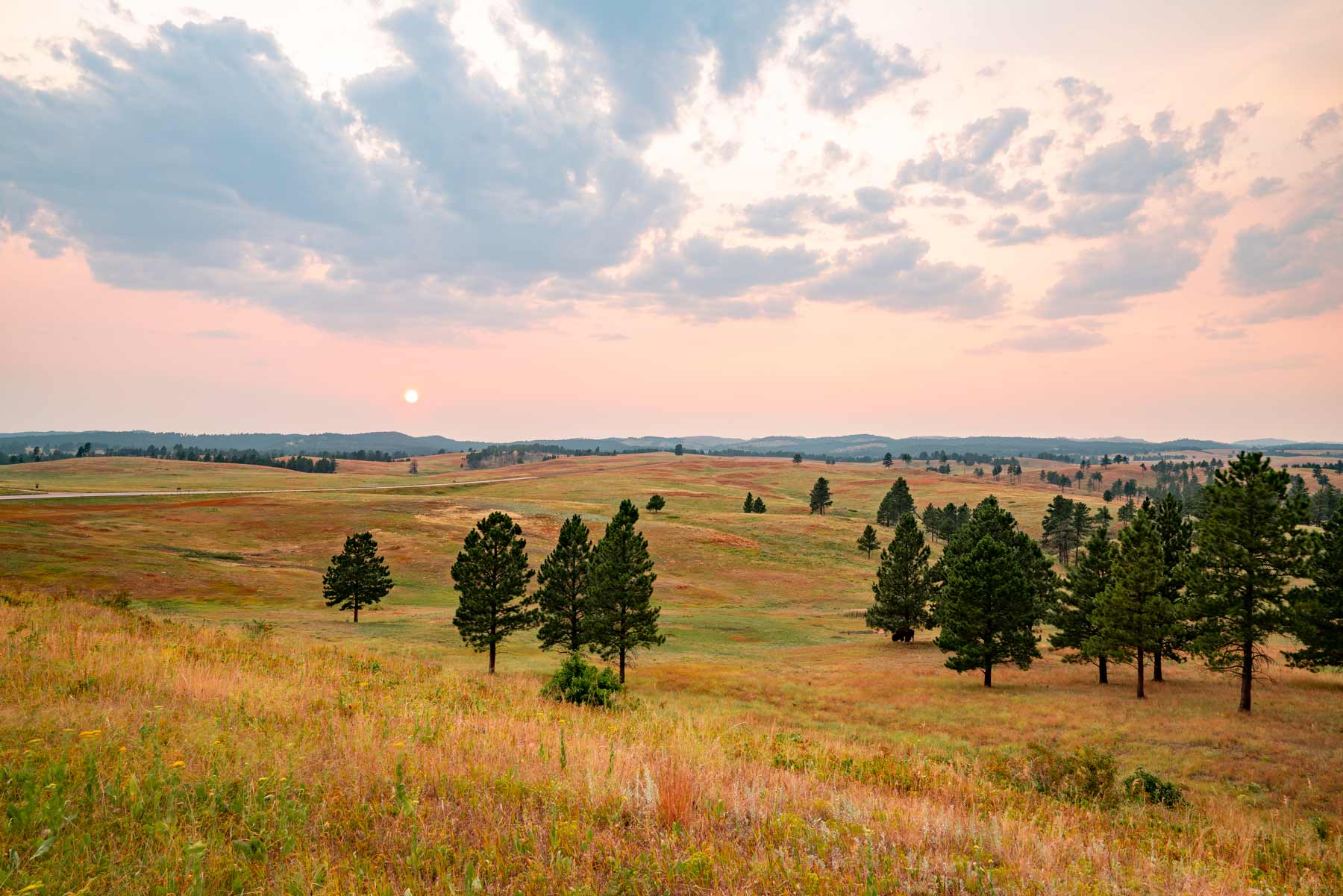
Just because we’re More Than Just Parks doesn’t mean that we’ve forgotten about them. At #9 on our list of the Best Historic Sites In South Dakota is Wind Cave National Park.
Wind Cave National Park is located in the southwestern part of South Dakota. It’s known for its unique geology and underground formations, as well as its abundant wildlife and scenic hiking trails.
The park gets its name from the cave system that lies beneath it. Wind Cave is one of the longest and most complex cave systems in the world, with over 149 miles of known passages. The cave is known for its distinctive “boxwork” formations, which are composed of thin calcite fins that intersect at various angles, creating a grid-like pattern.
The park was established in 1903 by President Theodore Roosevelt, making it the seventh national park in the United States.
In addition to the cave system, the park is home to a variety of above-ground attractions, including prairies, forests, canyons, and streams.
Things To Do At Wind Cave
While you’re there, I recommend the following activities:
Cave Tours: Wind Cave is known for its complex network of underground passages and rare boxwork formations. There are several guided cave tours available, ranging from easy to challenging.
Hiking: The park has over 30 miles of hiking trails that vary in length and difficulty. The trails offer scenic views of the prairie, forest, and wildlife.
Wildlife Viewing: The park is home to a variety of wildlife, including bison, pronghorn, elk, coyotes, and prairie dogs. You can see them on a scenic drive or hike through the park.
Camping: Wind Cave National Park offers several camping options, including tent camping, RV camping, and backcountry camping.
Ranger Programs: The park offers ranger-led programs, including hikes, talks, and demonstrations. These programs provide an educational and entertaining way to learn about the park’s history, geology, and wildlife.
Picnicking: The park has several picnic areas, which provide a great place to relax and enjoy the scenic views.
Horseback Riding: The park offers guided horseback riding tours, which provide an excellent opportunity to explore the park’s backcountry.
Biking: The park has several miles of bike trails, which provide a great way to see the park’s natural beauty.
Junior Ranger Program: The park offers a junior ranger program, which is a fun and educational way for kids to learn about the park and earn a badge.
Stargazing: Wind Cave National Park is a designated Dark Sky Park, which means it has minimal light pollution and provides an excellent opportunity for stargazing.
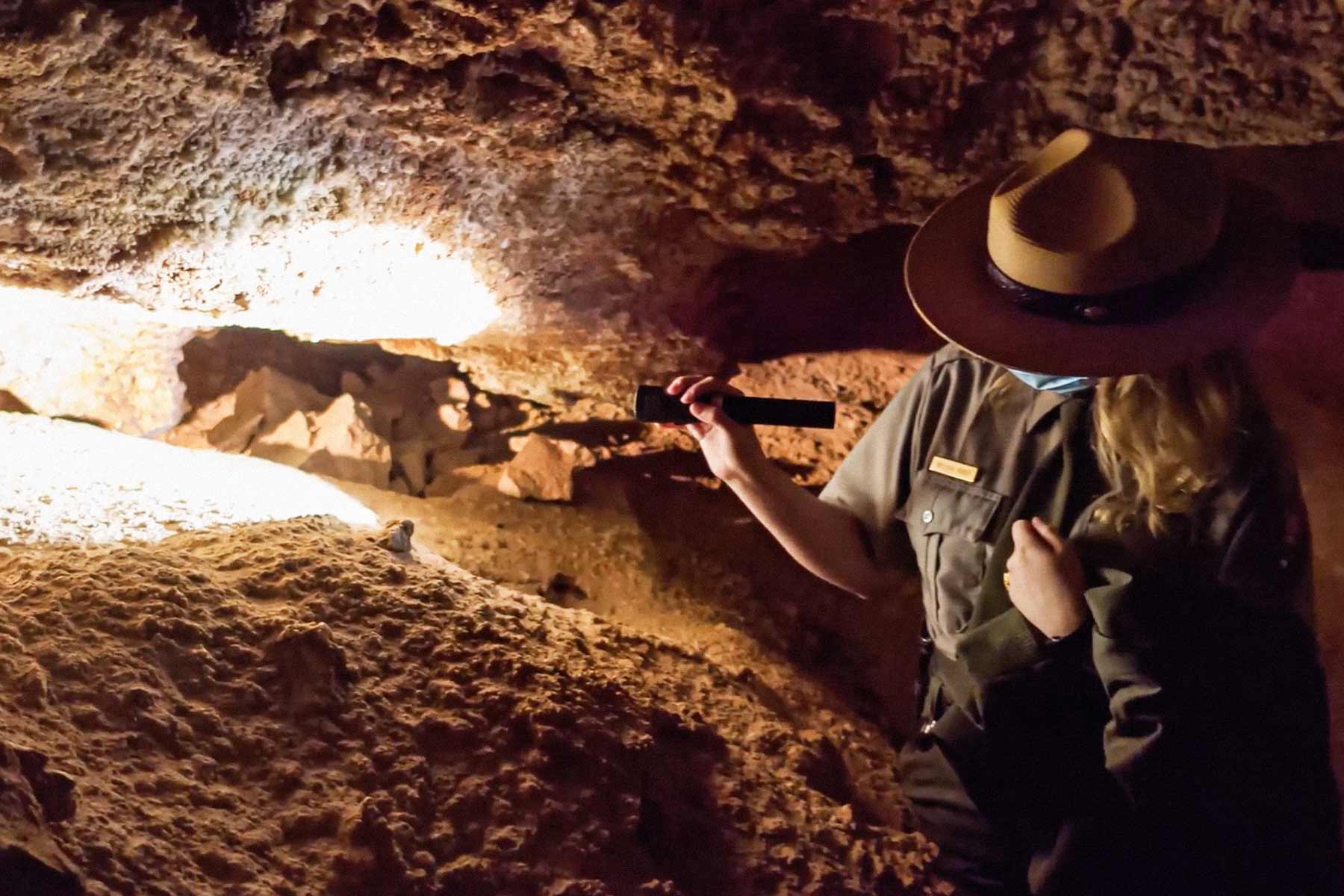
Planning a trip to Wind Cave? Check out our article: 10 Epic Things to Do at Wind Cave National Park
Check Out Our Wind Cave National Park Film
Situated where the Northern Great Plains meet the Black Hills, Wind Cave National Park spans more than 33,000 acres of spectacular views and subterranean wonders. Iconic wildlife, teeming forests, rolling hills, and one of the largest and most fascinating caves in the world. Wind Cave truly is more than meets the eye.
Journey with us as we explore life above and below ground in one of the most scenic corners of the United States.
8. Crazy Horse Memorial

Our next historic site is a tribute to a Lakota Sioux warrior who played a significant role in the resistance of white American encroachment on Native American lands during the late 19th century. At #8 on our list of the Best Historic Sites In South Dakota is the Crazy Horse Memorial.
The Crazy Horse Memorial is a massive mountain carving located in the Black Hills region of South Dakota. The monument is dedicated to Crazy Horse,
The idea for the Crazy Horse Memorial was first conceived in the 1930s by Lakota Chief Henry Standing Bear, who enlisted sculptor Korczak Ziolkowski to create a memorial to honor Crazy Horse and the spirit of the Lakota people. Ziolkowski began work on the monument in 1948 and continued to work on it until his death in 1982.
Today, the Crazy Horse Memorial is still under construction and is being carried on by the sculptor’s family. When completed, it will be the largest mountain carving in the world, measuring 641 feet long and 563 feet high.
The monument is being carved from Thunderhead Mountain, which is considered sacred by the Lakota people. The carving depicts Crazy Horse on horseback with his arm outstretched, pointing toward the horizon.
The sculpture will also feature several other elements, including a museum, a cultural center, and an educational center dedicated to the history and culture of the Lakota people.
A Controversial Project
The construction of the Crazy Horse Memorial has been controversial, with some Native American activists arguing that it perpetuates the stereotype of the “noble savage” and fails to accurately represent the complexity of Native American history and culture.
Others, however, see it as a symbol of pride and resistance, and a tribute to the Lakota people’s struggle to preserve their way of life in the face of American imperialism.
Despite the controversy, the Crazy Horse Memorial remains a popular tourist attraction and an important cultural and educational resource for visitors to South Dakota. It is also a powerful symbol of the ongoing struggle for Native American rights and sovereignty.
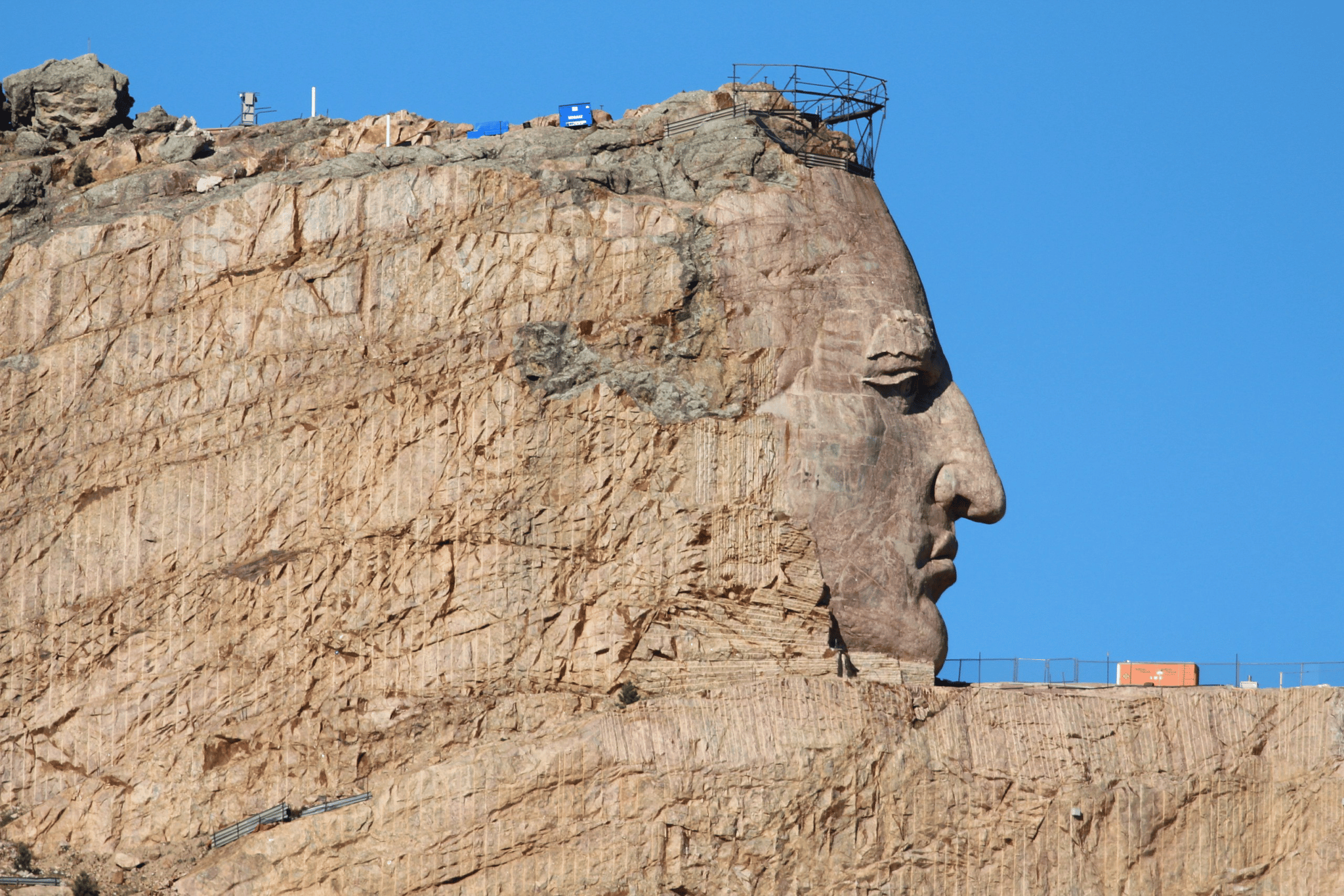
It’s More Than Just A Sculpture
The Crazy Horse Memorial is more than just a sculpture, it’s also a cultural center and a place of learning. The memorial offers various educational programs and events throughout the year, including Native American and cultural events, and it also provides opportunities for visitors to learn about the history and culture of the Lakota people.
The Crazy Horse Memorial is a unique and ambitious project that has become a popular tourist destination and an important symbol of Native American culture and heritage. It serves as a powerful reminder of the contributions and sacrifices of the Native American people, and it continues to be a work in progress.

7. Deadwood Historic District

If you love the history of the American West then South Dakota is a great place to visit. At #7 on our list of the Best Historic Sites In South Dakota is a place which celebrates this history. It’s the Deadwood Historic District.
The Deadwood Historic District is located in the Black Hills of South Dakota. The district is situated in the city of Deadwood, which was founded in 1876 during the Black Hills gold rush.
During the late 19th and early 20th centuries, Deadwood was a bustling, lawless town known for its gold and silver mines, as well as its saloons, brothels, and gambling establishments.
The city’s most famous resident was Wild Bill Hickok, a gunslinger and lawman, who was killed in Deadwood in 1876. The city also had a significant population of Chinese immigrants, who worked in the mines and businesses.
The City Became A National Historic Landmark
In the early 20th century, the mining industry declined, and Deadwood’s population dwindled. In 1989, the city legalized gambling, and in 1989, it became a National Historic Landmark.
The Deadwood Historic District encompasses over 4,000 acres and includes over 300 buildings. Many of the buildings date from the late 19th century and have been preserved or restored to their original appearance. The district includes a mix of residential, commercial, and institutional buildings, and it is known for its Victorian architecture.
The Deadwood Historic District is a popular tourist destination, drawing visitors to see the preserved historic buildings, as well as to gamble in the city’s casinos.
Things To See & Do In Deadwood
Today, the historic district contains many original buildings dating back to the nineteenth century. Visitors are transported back in time where they can learn about the history of this frontier town.
Among the fun activities that you can do while in Deadwood:
- Take a Walk Along the Deadwood Historic Main Street.
- Go For a Drink to Wild Bill Bar.
- Take a Tour to Broken Boot Gold Mine.
- Visit Cadillac Jack’s Gaming Resort.
- Visit the Adams Museum and Historic Adams House.
- Visit Days of 76 Museum.
- Visit Mount Moriah Cemetery.

6. Minuteman Missile National Historic Site
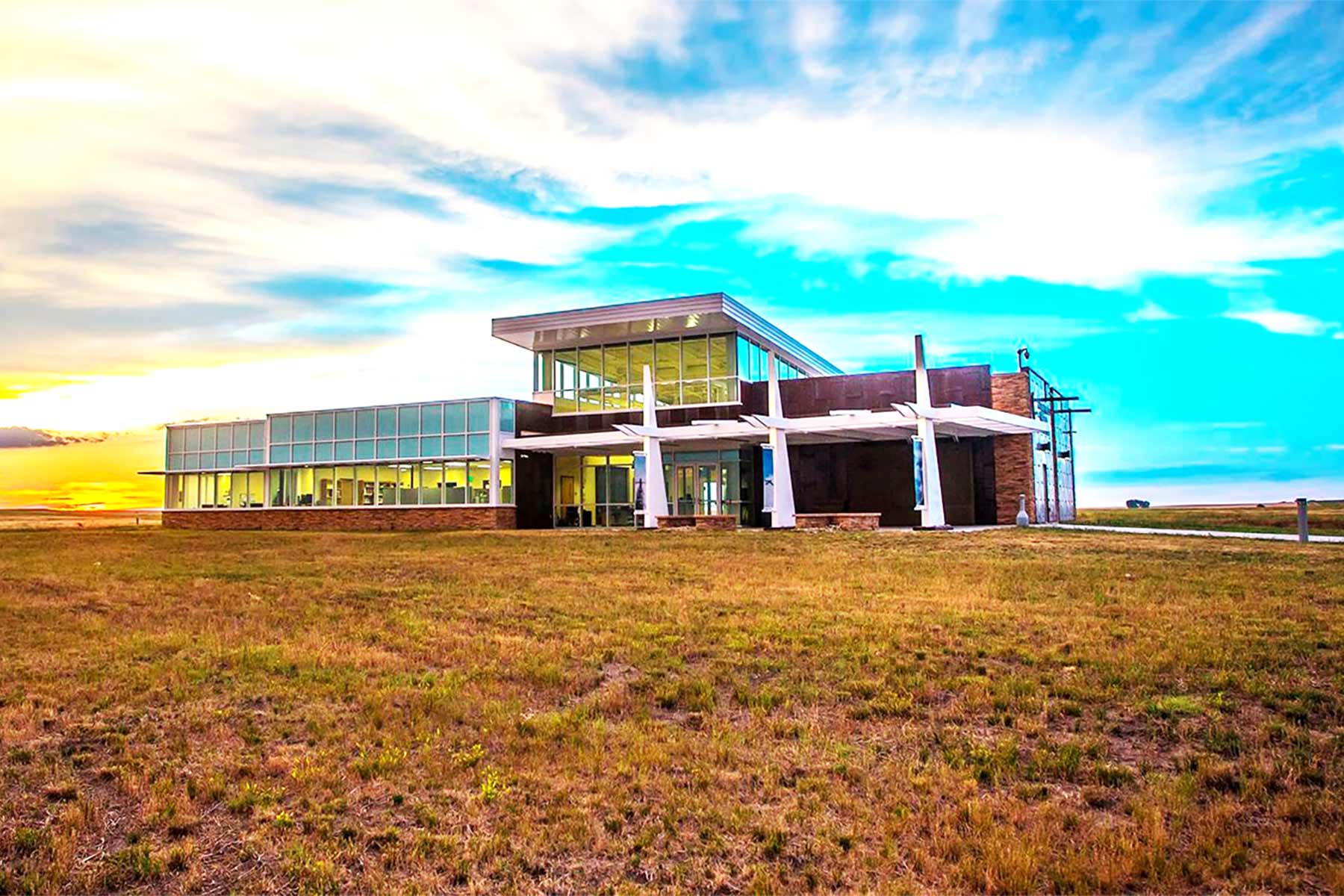
From a infamous Wild West to an eerie tribute to the Cold War. Our next historic site is the Minuteman Missile National Historic Site.
It was built at a time of heightened tensions between the U.S. & U.S.S.R. and serves as a time capsule for folks interested in visiting the past.
As part of this era, a vast arsenal of nuclear missiles were placed in the Great Plains. Hidden in plain sight for thirty years, 1,000 missiles were kept on constant alert; hundreds remain today.
As the National Park Service notes, “The Minuteman Missile remains an iconic weapon in the American nuclear arsenal. It holds the power to destroy civilization, but is meant as a nuclear deterrent to maintain peace and prevent war.”
While Minuteman Missile National Historic Site is not one of the more famous South Dakota National Parks, it is still a very popular place to visit that books out fast.
Things To Do At Minuteman Missile
As a retired history teacher, I have immersed myself in the fascinating history of this impactful period. I would recommend the following things to do:
- The Visitor Center: I always recommend that first-timers begin there. Exhibits, films, and a bookstore allow visitors to explore the story of the Minuteman Intercontinental Ballistic Missile System and its role in the larger context of the Cold War.
- The Bookstore: They offer books, educational materials, and interpretive items that relate to the themes of Minuteman Missile National Historic Site.
- The Mobile Tour: A Mobile Phone guided tour of Delta-09 and Delta-01 is available for visitors to learn the history of Minuteman Missile on the Great Plains and how it was operated for thirty years.
- The Delta 01 Launch Control Facility: Delta- 01 occupies an open, grassy tract of land approximately one-half mile north of Interstate 90. Approaching the site from the Interstate, it looks like a lone ranch house in the open grassland. There’s a thirty-minute guided tour of the control center at Delta-01 which begins with a walk through of the grounds and topside support building.

The Top 5 Historic Sites In South Dakota
5. Wounded Knee National Historic Landmark

We’re on to the Top 5 Historic Sites In South Dakota. At #5 we have an important site with a tragic past. Welcome to the Wounded Knee National Historic Landmark.
The Wounded Knee National Historic Landmark is located in the Pine Ridge Indian Reservation in South Dakota. The site is known for the Wounded Knee Massacre, which occurred on December 29, 1890.
This event marked the end of the armed resistance of the Sioux to the U.S. government’s attempts to force them onto reservations.
The massacre at Wounded Knee was the result of a long history of tension between the U.S. government and the Lakota Sioux people. The Sioux, along with many other Native American tribes, had been forcibly removed from their ancestral lands, and their way of life had been greatly disrupted by the arrival of white settlers.
The government’s attempts to assimilate the Sioux into white American culture through forced attendance at boarding schools, and the allotment of reservations, met with resistance.
A Forgotten Site
In the years that followed the massacre, the Wounded Knee site remained largely forgotten. The land was owned by various non-Native American individuals and organizations and the massacre site was not marked or preserved as a historical site.
It wasn’t until the 1970s, when the American Indian Movement (AIM) occupied the site, that the country began to focus on the events of 1890 and the site became a symbol of the ongoing struggle for Native American rights.

To learn more about the Wounded Knee Massacre I recommend: Bury My Heart at Wounded Knee: An Indian History of the American West by Dee Brown.
4. Lewis & Clark National Historic Trail
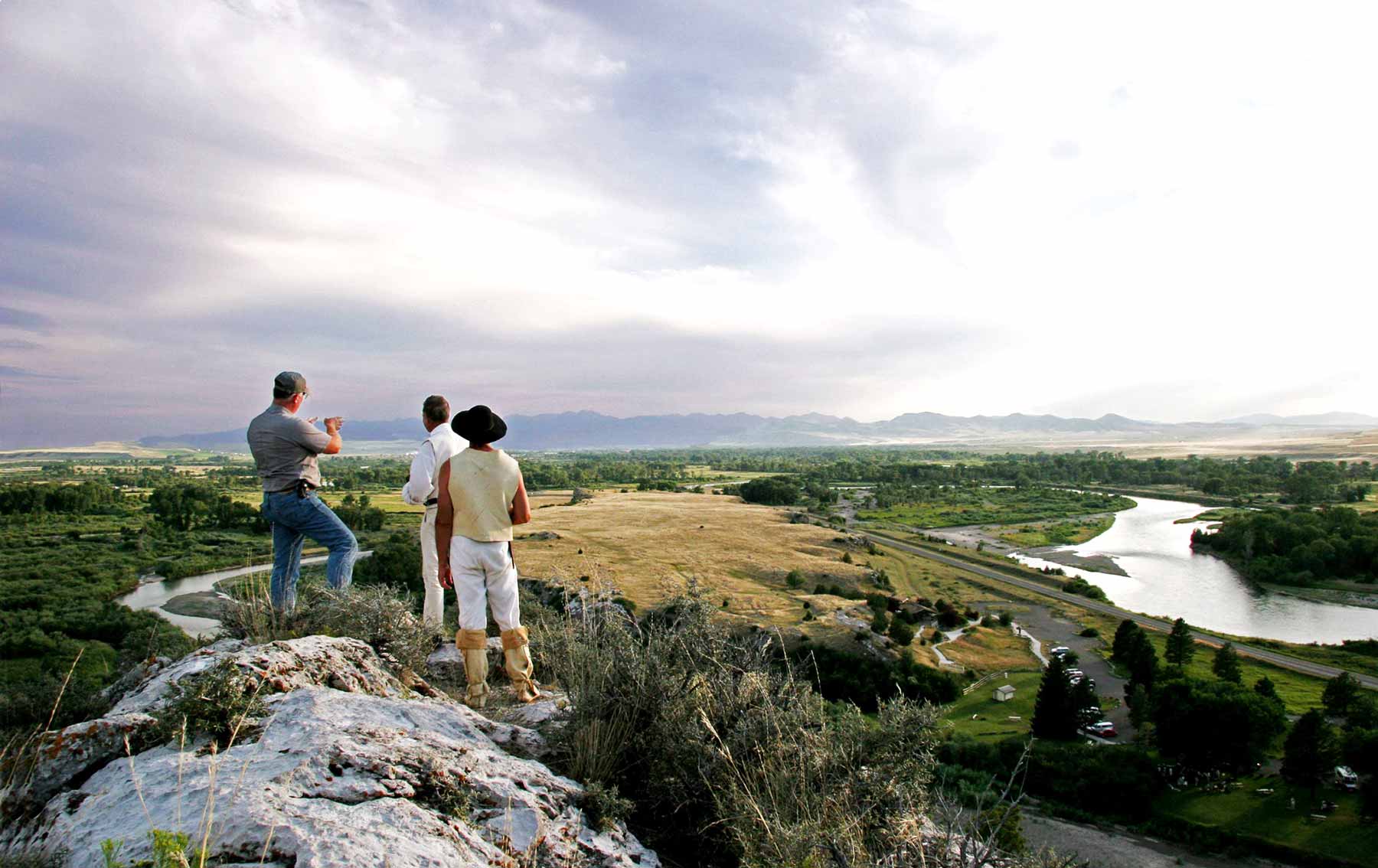
We’re on to the “Final Four.” At #4 is one of the most famous national historic trails in America. It’s the Lewis & Clark National Historic Trail.
This trail follows the historic outbound and inbound routes of the Lewis and Clark Expedition. As a retired history teacher, I get goosebumps just thinking about the Corps of Discovery and their incredible trek.
Commemorating the Lewis & Clark Expedition (1804-06), the Lewis & Clark Trail connects 16 states (Pennsylvania, Ohio, West Virginia, Kentucky, Indiana, Illinois, Missouri, Kansas, Nebraska, Iowa, South Dakota, North Dakota, Montana, Idaho, Washington and Oregon).
The trail is administered by the National Park Service. It’s not a hiking trail, but does provide opportunities for hiking, boating and horseback riding at many locations along the route.
It’s a great opportunity to see the USA while learning about the brave men (and one woman) who weren’t able to make the journey in an air-conditioned SUV.

3. Jewel Cave National Monument
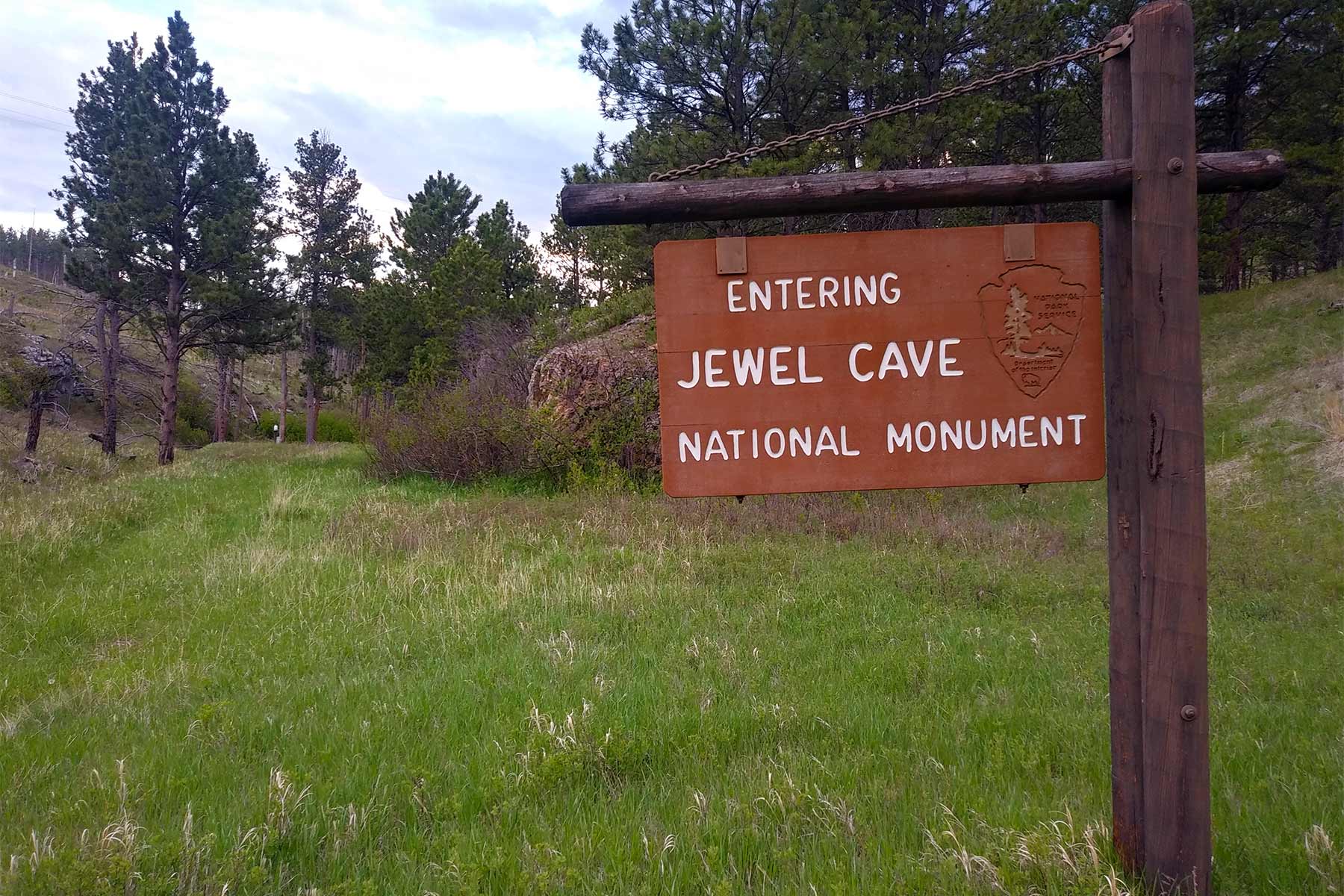
If you enjoy exploring caves then you’ll love our next site. At #3 on our list of the Best Historic Sites In South Dakota is the Jewel Cave National Monument. It’s a protected area located in the Black Hills of South Dakota.
The monument is home to Jewel Cave, one of the longest and most complex caves systems in the world. It is known for its unique formations of calcite crystals, including dogtooth spar, frostwork, and cave popcorn.
The cave was discovered in 1900 by two local prospectors, and it was subsequently explored by several different individuals and groups.
It was declared a national monument in 1908 by President Theodore Roosevelt, making it one of the first caves to be protected by the National Park Service.
The cave has over 180 miles of mapped and surveyed passages, making it the third longest cave in the world, behind Mammoth Cave in Kentucky and Sistema Sac Actun in Mexico. It is also known for its unique formations of calcite crystals, including dogtooth spar, frostwork, and cave popcorn.
There Are Some Amazing Cave Tours
The Jewel Cave National Monument offers several tours to visitors, including the Scenic Tour, the Historic Lantern Tour and the Wild Caving Tour.
The Scenic Tour is the most popular tour, it takes visitors on a walking tour of the cave’s upper levels, and the visitors can see some of the most beautiful and unique formations in the cave, including dogtooth spar, flowstone, and cave popcorn.
The other tours offer more strenuous and adventurous experiences and they take visitors deeper into the cave.
Jewel Cave National Monument provides visitors with an opportunity to explore one of the most unique and spectacular caves in the world, and it’s a great place to learn about the geology and natural history of the Black Hills region.
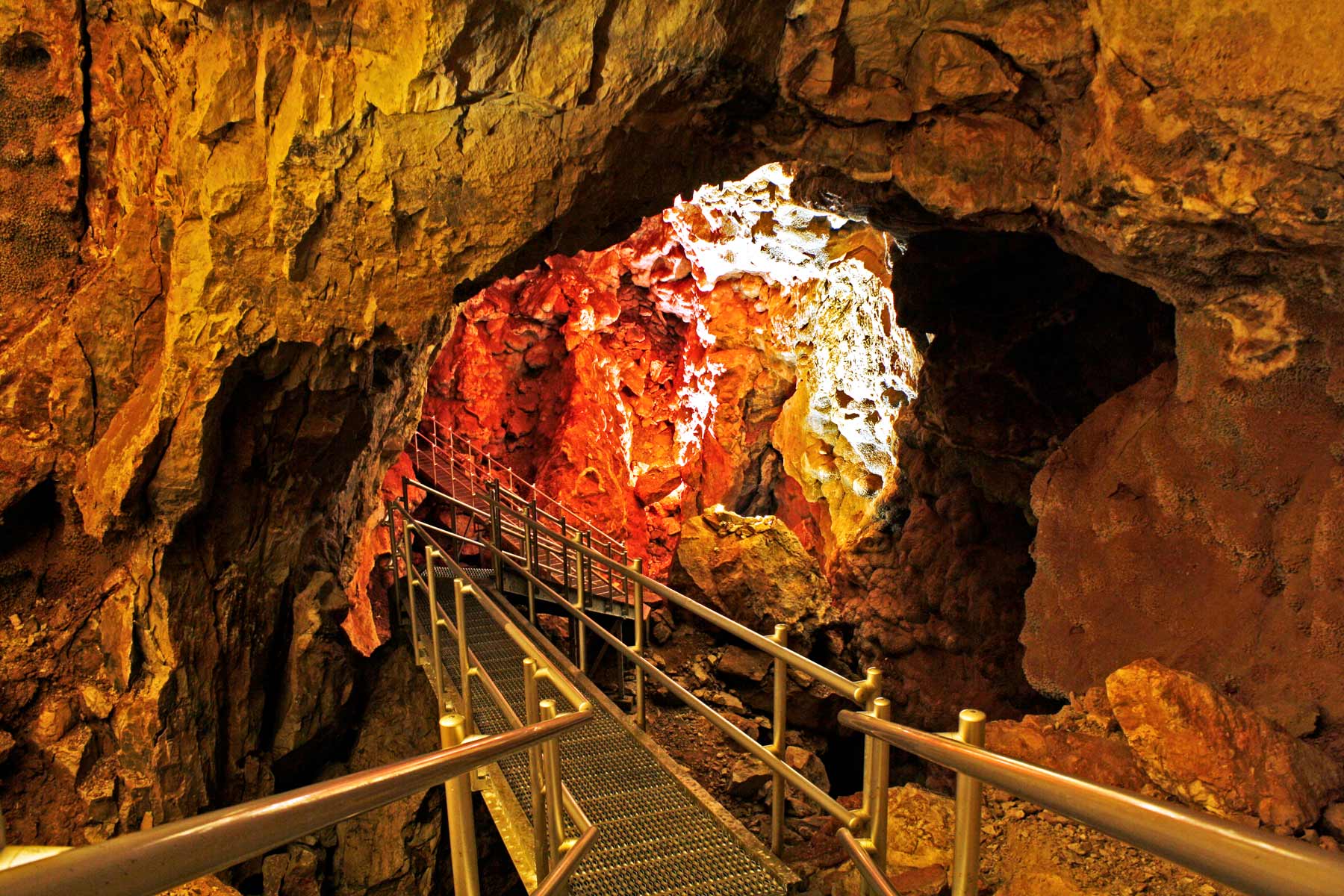
Hiking Trails At Jewel Cave
There are two self-guided trails at the monument, which include the one-quarter-mile (0.4 km) Roof Trail and 3.5 mile (5.6 km) Canyons Trail.
A third trail is nearby on the Black Hills National Forest, which is the 5.5 mile (8.9 km) Hell Canyon Trail.
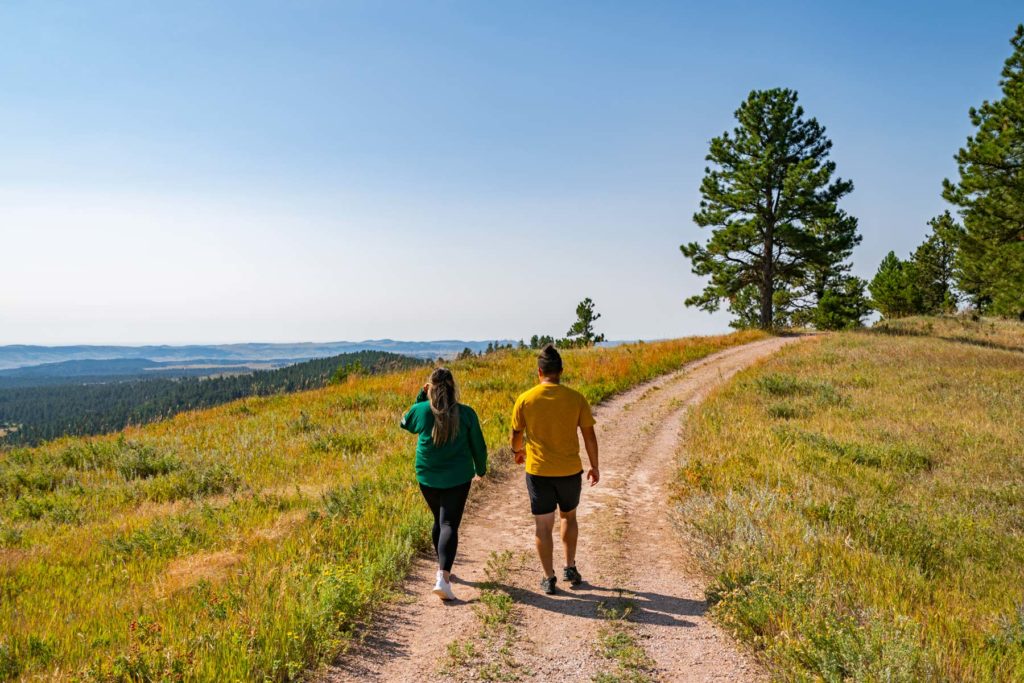
2. Badlands National Park
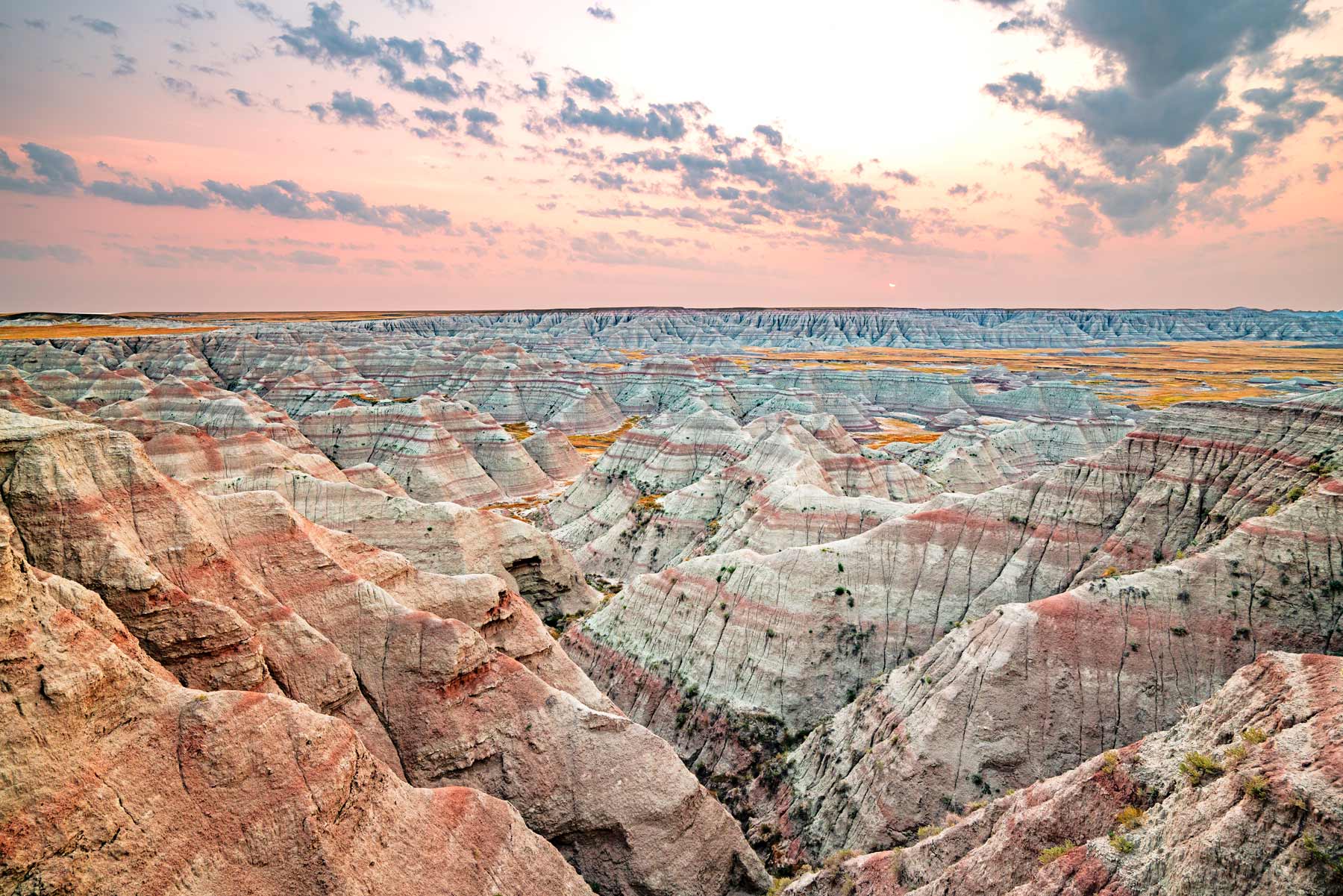
We’re down to our final two historic sites. In the runner-up spot at #2 is one of More Than Just Parks favorite national parks. Welcome to Badlands National Park.
Situated in the heart of the Northern Great Plains, Badlands National Park spans 244,000 acres of spectacular landscapes, diverse wildlife, and the largest undisturbed mixed grass prairie in the United States.
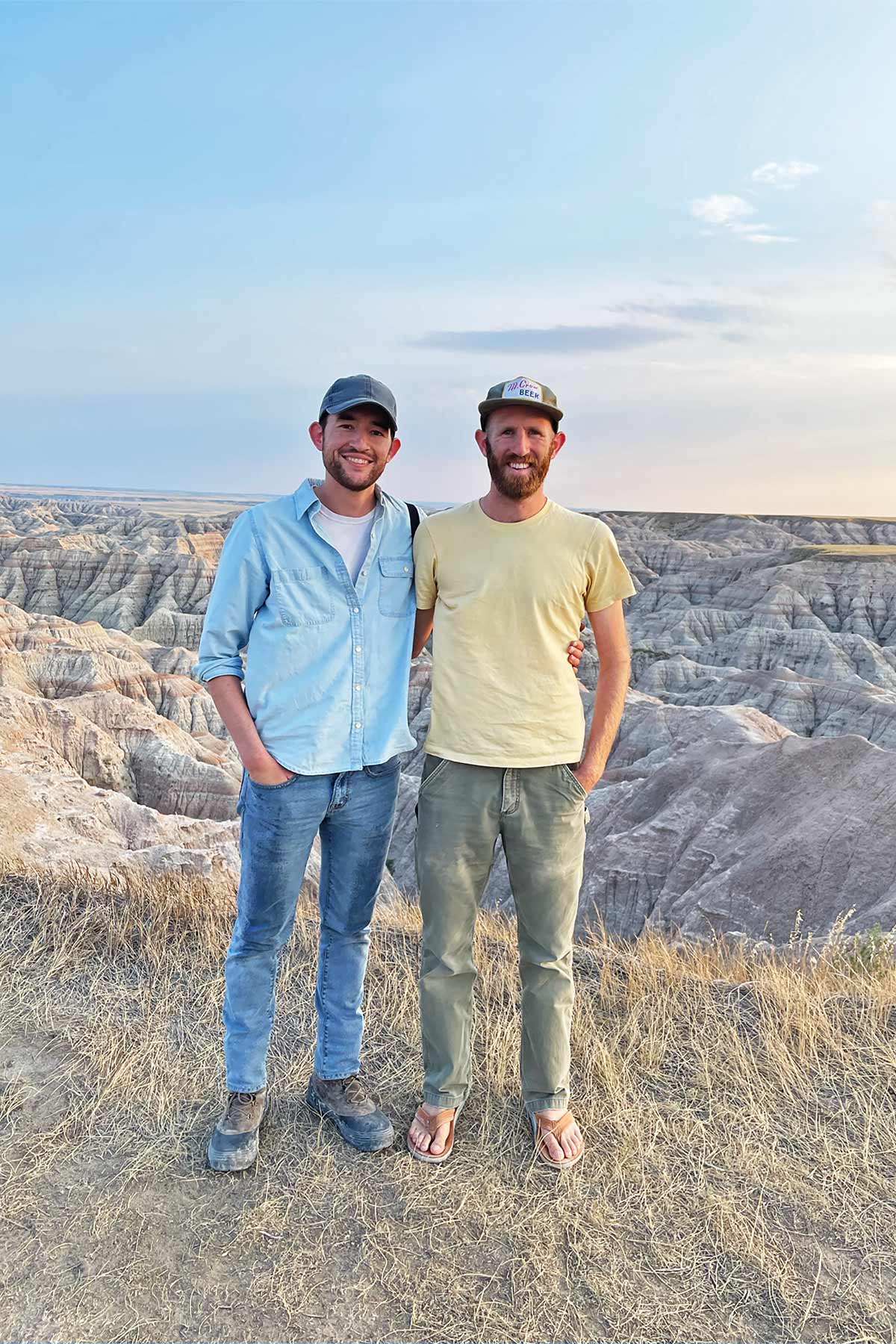
Badlands National Park is one of our favorite parks in the entire country and the best national park in South Dakota. Here you’ll discover a land where bison still roam and towers rise from the prairie in dazzling formations.
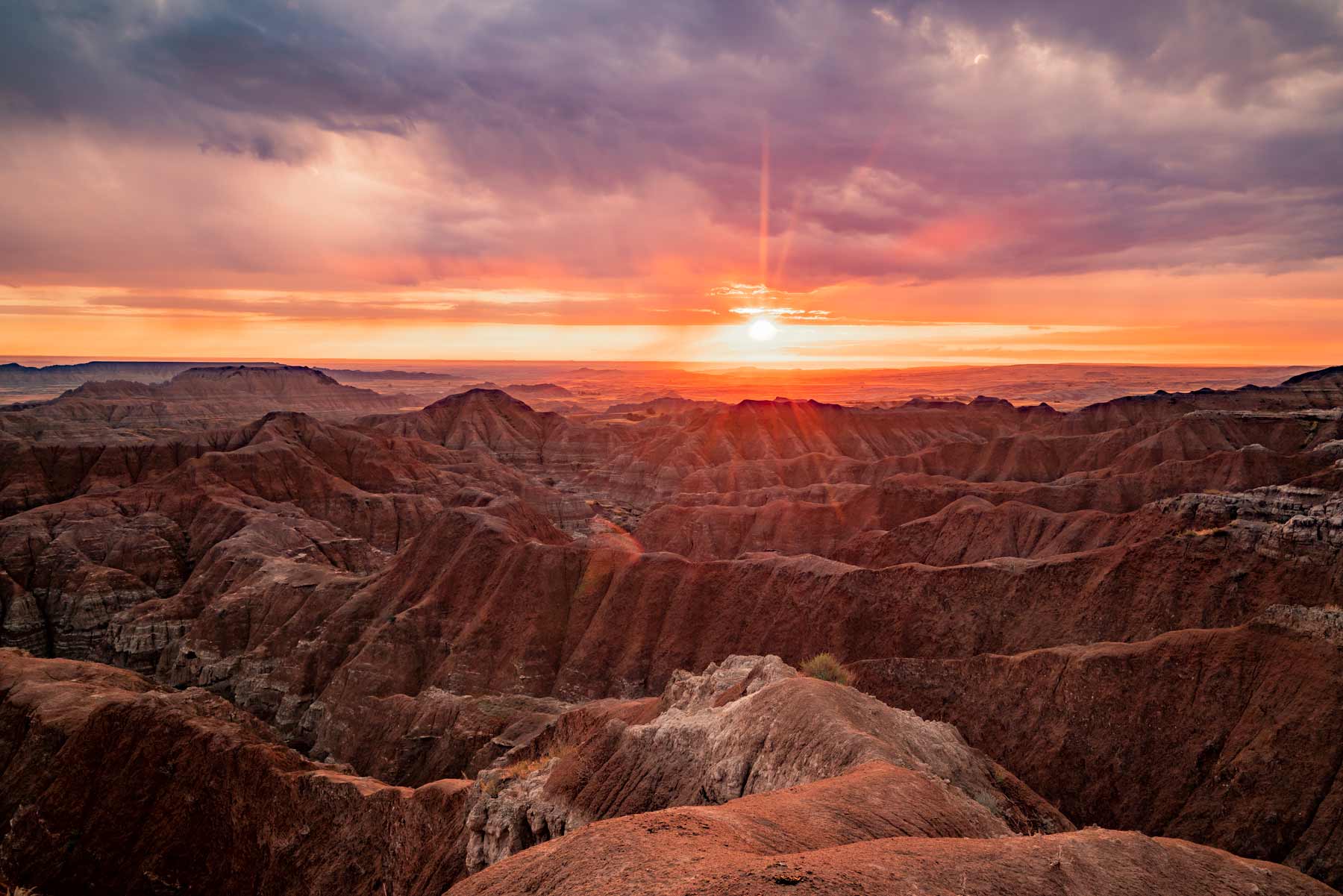
This vast unending prairie is draped in a beautiful silence where the only sounds to be heard are the uninterrupted winds of the prairie and the song of the western meadowlark.
Journey With Us To The Badlands
BADLANDS 8K is the culmination of several weeks spent filming in the rugged Badlands of South Dakota. Situated in the heart of the Northern Great Plains, Badlands National Park spans 244,000 acres of spectacular landscapes, diverse wildlife, and the largest undisturbed mixed grass prairie in the United States.
Journey with More Than Just Parks to discover the land where bison still roam and towers rise from the prairie in dazzling formations. This is the Badlands. Filmed in stunning UHD 8K.
We chose to film Badlands National Park in May to capture the park in an off season before temperatures and crowd sizes rise. The Badlands features a surprising amount of wildlife including bison, pronghorn antelope, bighorn sheep, coyotes, prairie dogs, western meadowlarks, burrowing owls, and more.
If you’re looking for things to do in the Badlands check out our article: 18+ (INCREDIBLE) Things to Do in Badlands National Park
Things To Do At Badlands National Park
The rugged beauty of the Badlands draws visitors from around the world. These striking geologic deposits contain one of the world’s richest fossil beds.
Ancient horses and rhinos once roamed here. The park’s 244,000 acres protect an expanse of mixed-grass prairie where bison, bighorn sheep, prairie dogs, and black-footed ferrets live today. (Source: NPS)
Among the popular activities awaiting you are the following:
- Night Sky Viewings: There’s no better way to understand and appreciate the beauty of the Badlands than to see its dark skies. Park rangers and astronomy volunteers are available to point out objects in the night sky and help you look through telescopes.
- Wildlife Watching: You can see bison, bighorn sheep and prairie dogs. Check out Sage Creek Rim Road, Pinnacles Overlook and Roberts Prairie Dog Town as some of the places where you will see these amazing creatures.
- Take a Scenic Drive Along the South Unit of the Badlands: There you will enjoy stunning views.
- Drive Badlands Loop Road: You can see beautiful landscapes, informational exhibits, and glimpses of wildlife on this incredible drive.
- Sunrises & Sunsets: If you love to take pictures than get up early to see some spectacular sunrises not to mention the amazing sunsets. For sunrises, try the Big Badlands Overlook, the Door Trail, the Norbeck Pass area, the Dillon Pass area, and Panorama Point, just west of Bigfoot Pass. For sunsets, try Pinnacles Overlook, Conata Basin Overlook, Bigfoot Pass Picnic Area, and the Norbeck Pass area.
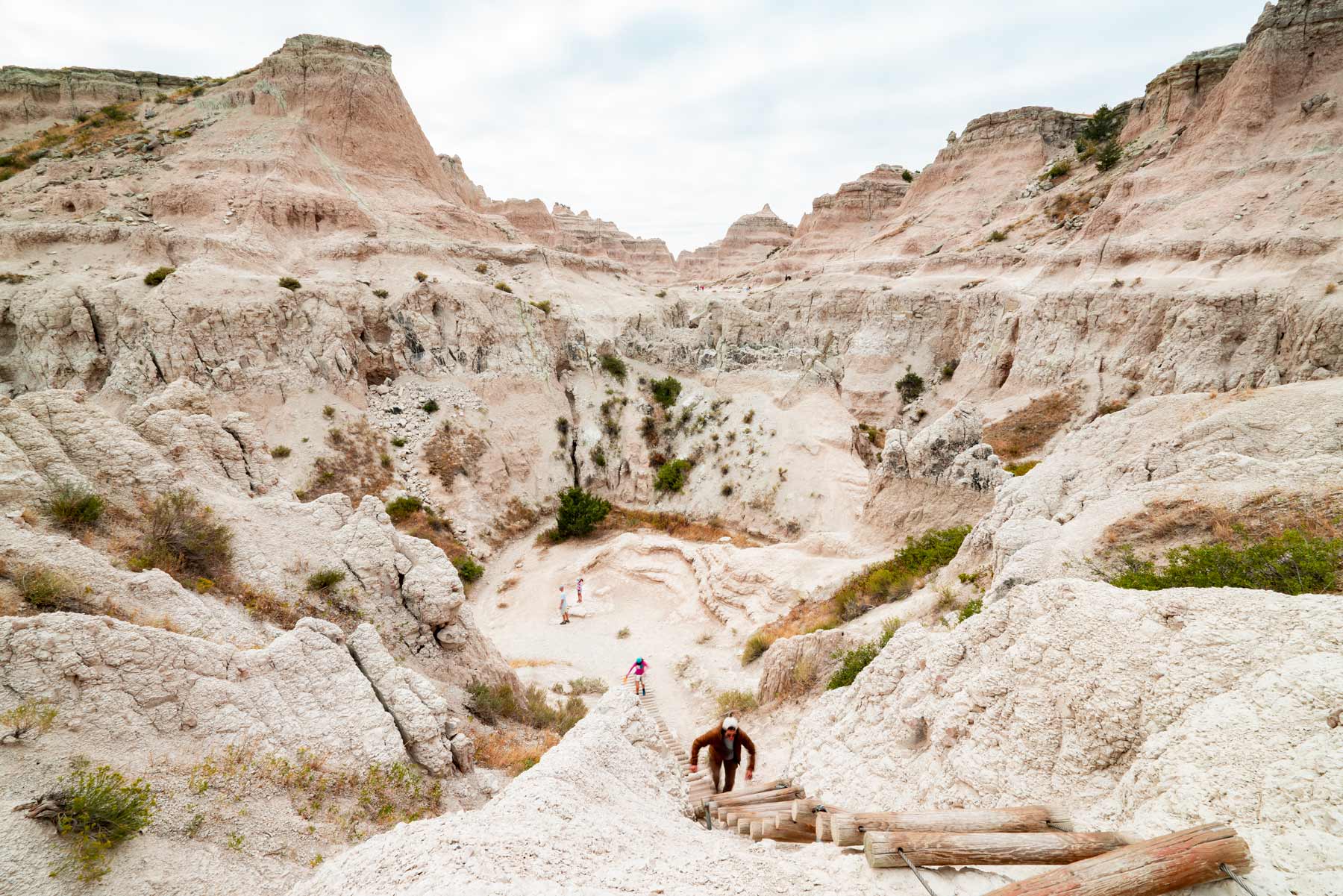
CHECK OUT: 10 AMAZING Facts About Badlands National Park
1. Mount Rushmore National Memorial
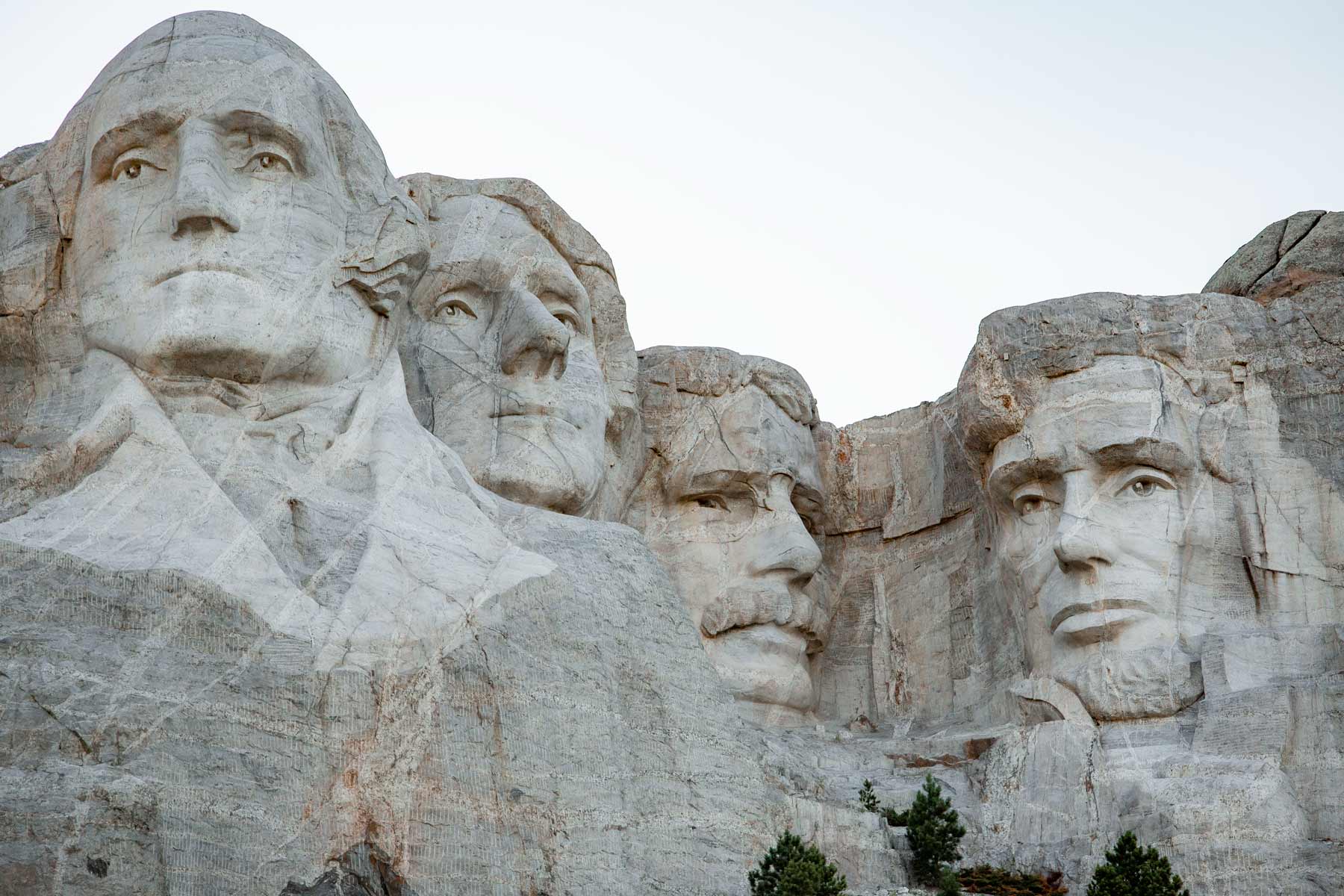
More Than Just Parks selected as our #1 Historic Site In South Dakota one of the most iconic sites in the world. It’s Mount Rushmore National Monument.
Mount Rushmore is located in the heart of the Black Hills which are full of really incredible sites including two national parks, two national monuments, a national forest, a national grassland, state parks, and more. Rushmore is one of the most visited national parks in South Dakota.
Contrary to popular belief, the faces on Mount Rushmore were not chosen by the US Government but rather the chief sculptor, Gutzon Borglum.
The carving of Mount Rushmore National Memorial took 14 years to complete from 1927 to 1941. The original plan called for carving each figure from the waist up but funding ran short and that plan was abandoned.
Now if you’re interesting in learning more about Gutzon Borglum and the building of Mount Rushmore then I recommend: Six Wars at a Time: The Life of Gutzon Borglum, Sculptor of Mt. Rushmore by Howard Shaff.
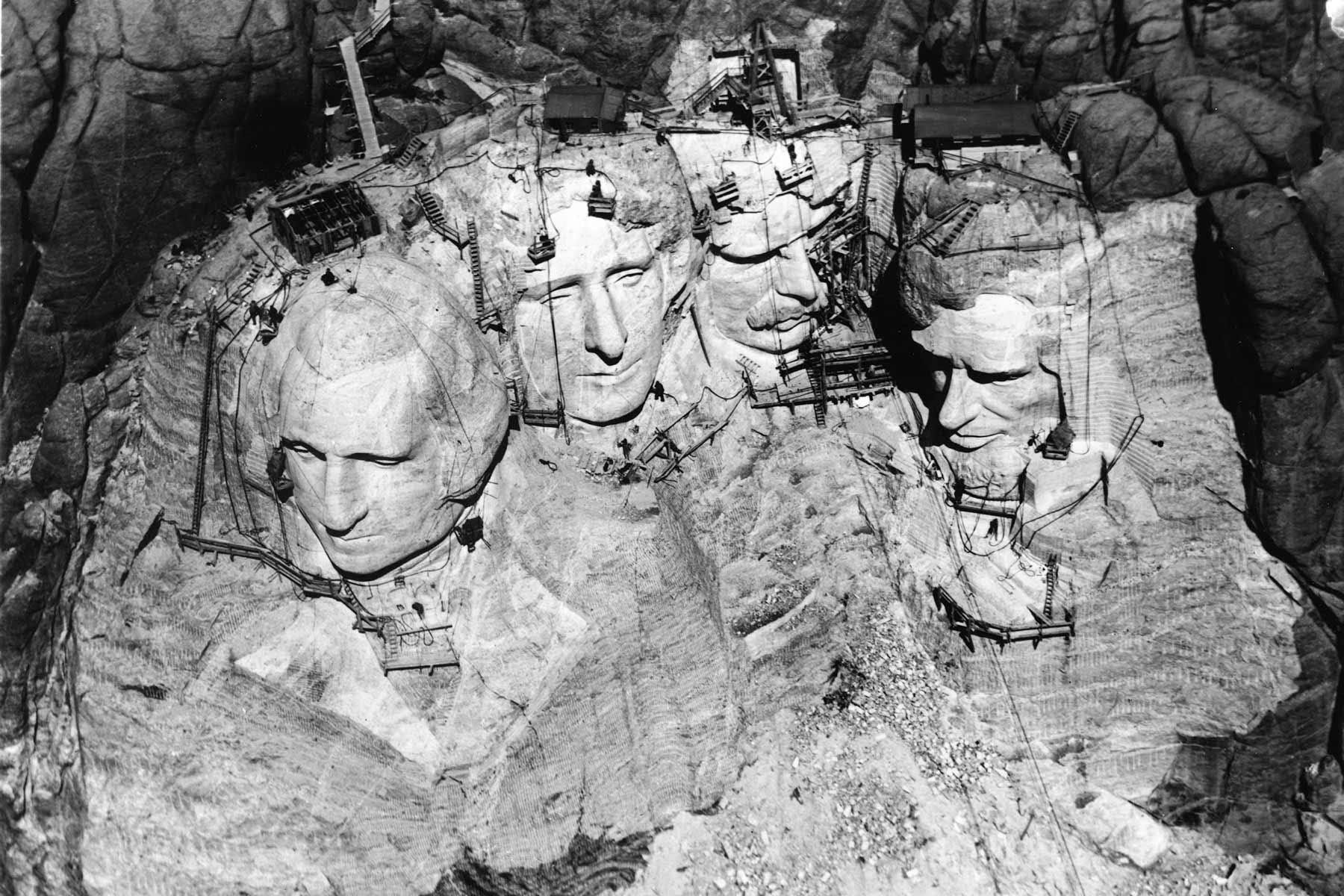
Top 10 Things To Do At Mount Rushmore
More Than Just Parks has our “Top Ten” list of things to see and do at Mount Rushmore.
10. Walking the Avenue of the Flags. This short stroll frames the faces on the monument beautifully between the flags of every state in the US. How long will it take for you to find your state’s flag?
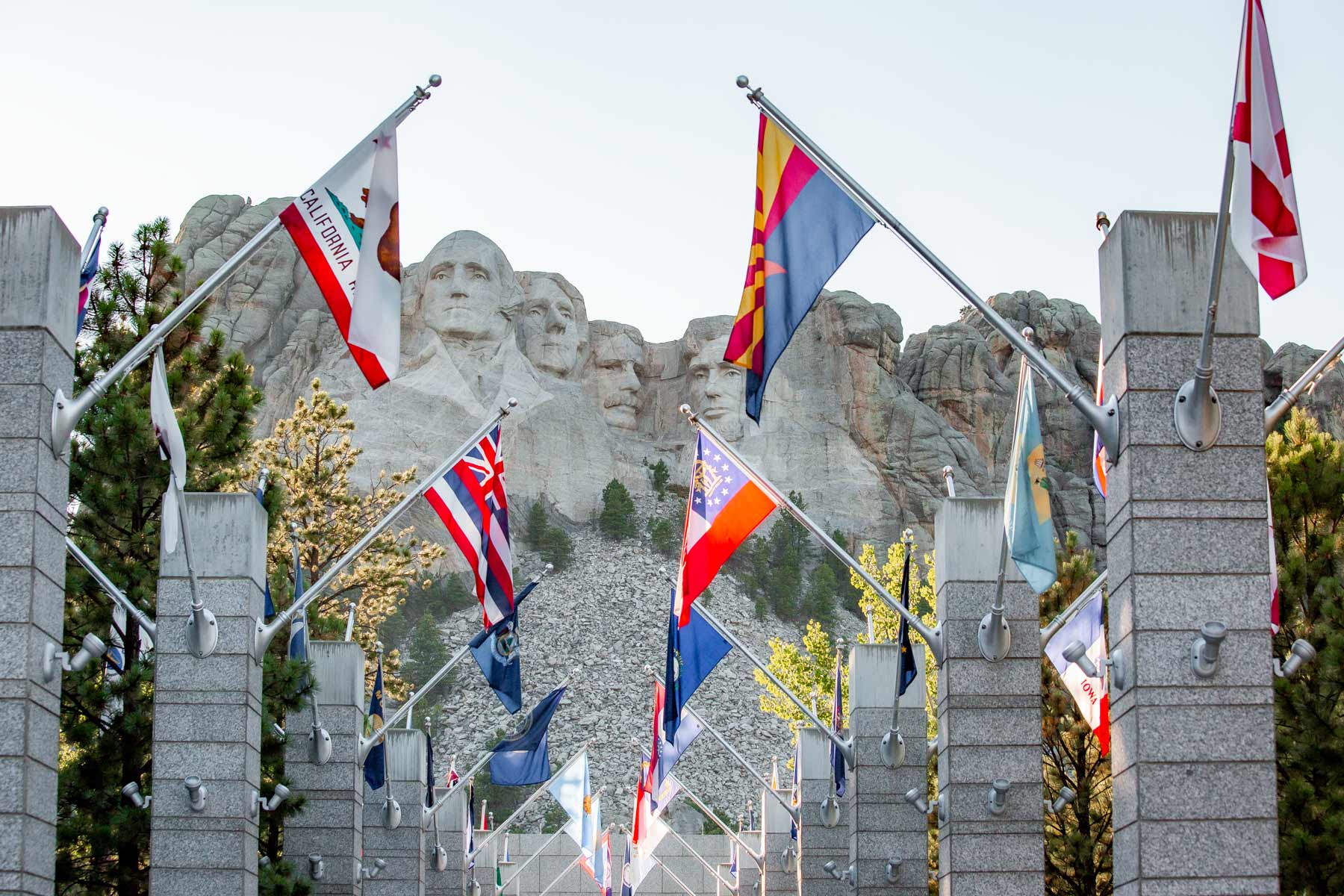
9. Seeing the faces from the Grand View Terrace. It’s the main viewpoint at Mount Rushmore and best place to see the president’s faces is from the Grand View Terrace. From this point you have clear, unobstructed views of the faces.
8. Hiking the Presidential Trail. The Presidential Trail starts near the visitor center and takes you closer to the carved faces. At just .6 miles this trail is easy taking about 30 minutes to complete at a leisurely pace but does involve 422 stairs to climb.
7. Have a “monumental meal” at Carver’s Cafe. The offerings here are basic including things like pizza, french fries, chili, sausage, eggs, biscuits, and so on.
6. Visiting the Sculptor’s Studio. Located at the end of the Presidential Trail, the Sculptor’s Studio is a great spot to enrich your visit. The studio is a small building where Gutzon Borglum worked for two years while sculpting Mount Rushmore.

Top 5 Things to Do at Mount Rushmore
5. See the Lincoln Borglum Visitor Center. There’s no better place to learn about the history and undertaking of Mount Rushmore than the Lincoln Borglum Visitor Center.
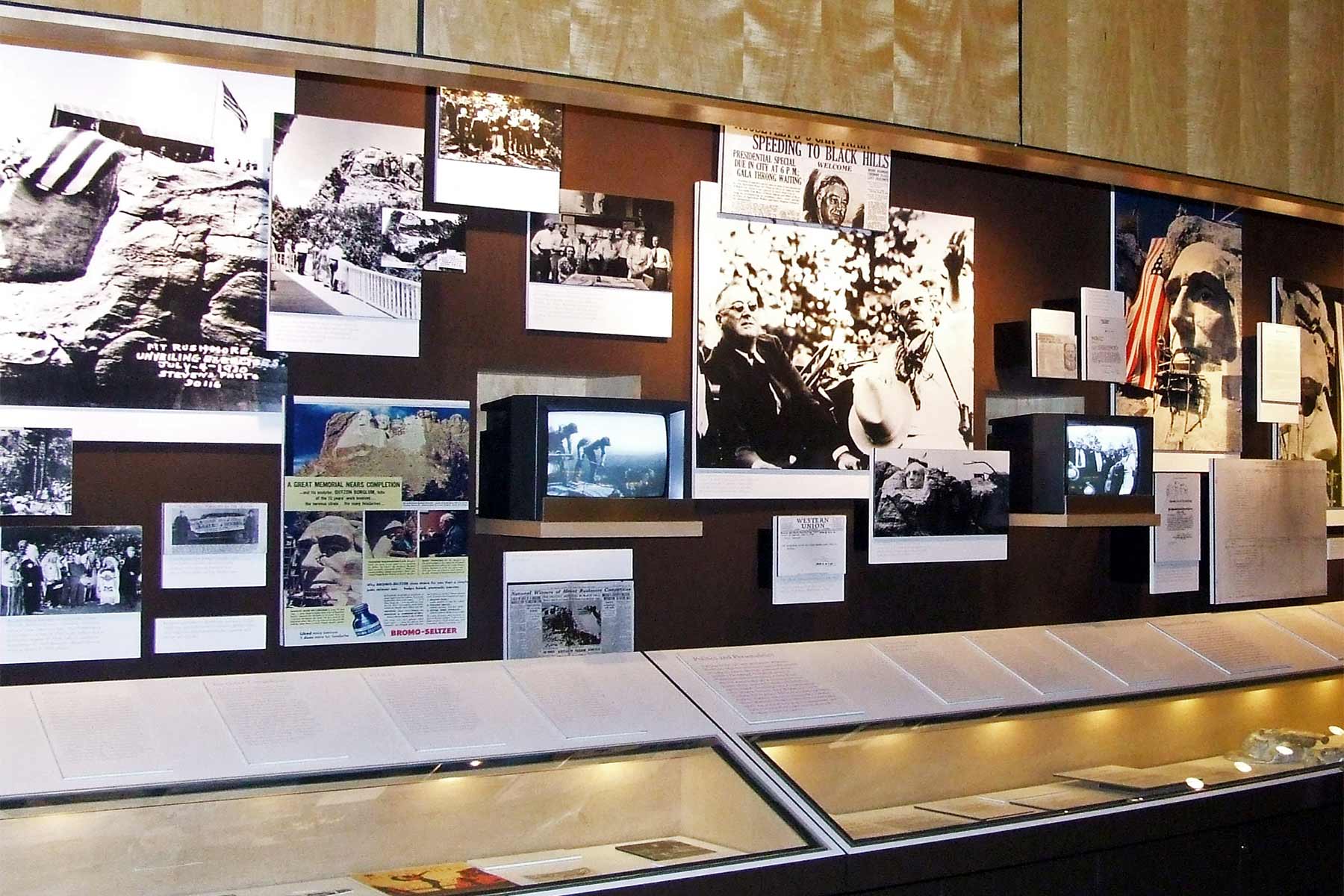
4. Have some T.J.’s Ice Cream. According to the park concessionaire who manages the ice cream stand, “this extraordinarily rich ice cream gets its sweet vanilla flavor from vanilla beans sourced from where Mr. Jefferson would have gotten them in his day.”
3. Hiking the Blackberry Trail. The Blackberry Trail is one of only two trails located within Mount Rushmore Memorial. It was designated as a National Recreation Trail in 2018 that connects with the Centennial Trail in the Black Elk Wilderness.
2. Watching the sunset across the memorial. One of the most magical times to see Mount Rushmore is at sunset as the crowds begin to die down and the mountain changes colors from grey to sunset hues.
1. Drumroll please. In the top spot we recommend staying for the Evening Lighting Ceremony. At 45 minutes in length the ceremony starts at 9pm from late May to mid August and then 8pm from mid August to October 1.
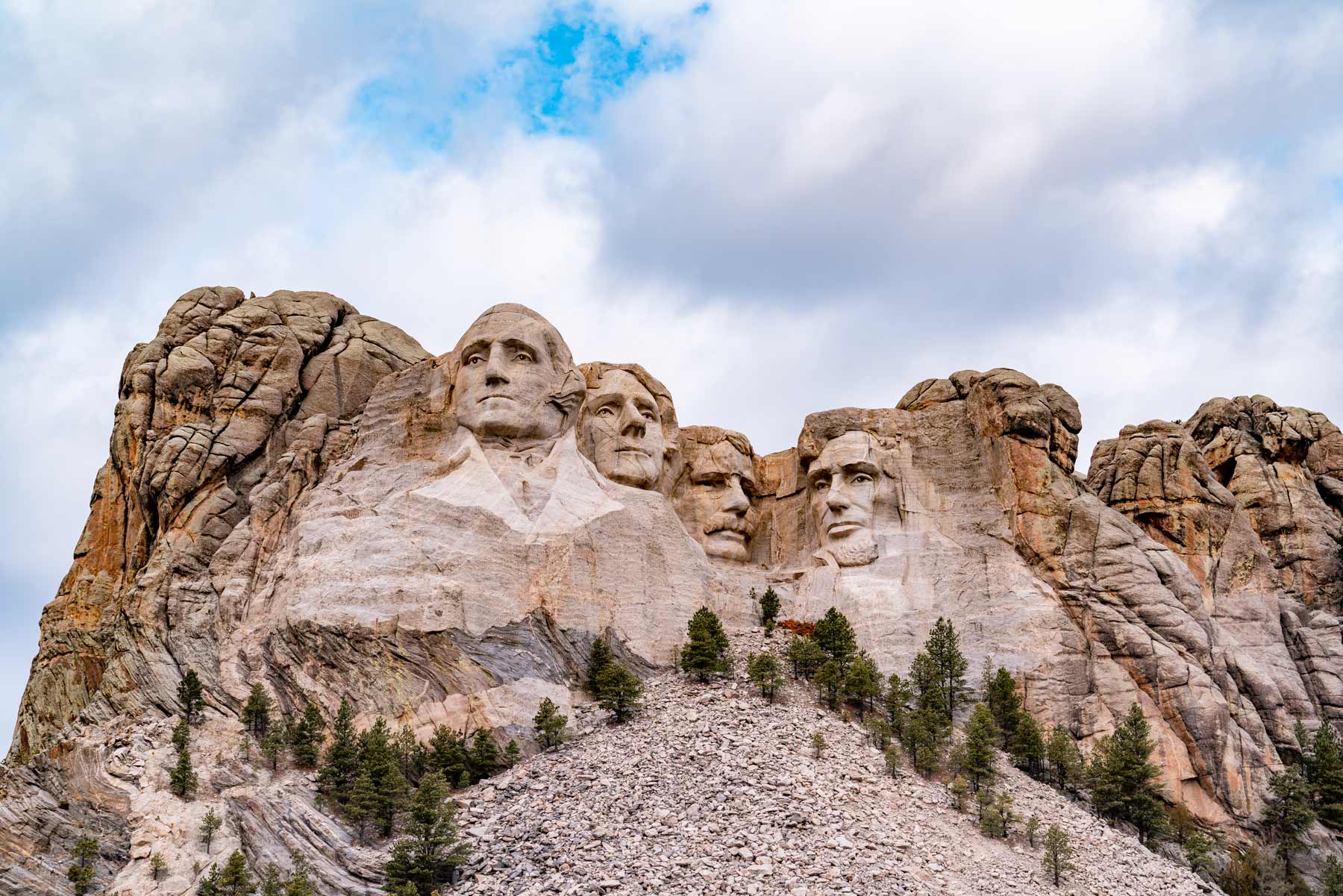
For more on Mount Rushmore check out our article: 15 HELPFUL Tips for Visiting Mount Rushmore (Things to Do + Photos)
Check Out Our Article On The Top 25 Historic Landmarks In America
As a matter of fact, More Than Just Parks has ranked what we consider to be the Top 25 Historic Landmarks In America.
Mount Rushmore National Memorial comes in at #3.
Which site did we rank as #1. Check out our article to find out.

CHECK OUT OUR ARTICLE: 25 Bucket List Famous Landmarks In America
List Of Historic Sites In South Dakota
- Mount Rushmore National Memorial
- Badlands National Park
- Jewel Cave National Monument
- Lewis & Clark National Historic Trail
- Wounded Knee National Historic Landmark
- Minuteman Missile National Historic Site
- Deadwood Historic District
- Crazy Horse Memorial
- Wind Cave National Park
- USS South Dakota Battleship Memorial
- City Of Presidents
- Tatanka
- National Music Museum
- The Corn Palace
- Fort Sisseton Historic State Park
Why Trust Us About Historic Sites In South Dakota?
We’re Jim Pattiz and Will Pattiz, collectively known as the Pattiz Brothers and we absolutely LOVE the national parks.
You should probably know that we don’t just make this stuff up out of thin air. We’ve spent our entire adult lives exploring and filming America’s national parks and public lands.
We’ve worked with the National Park Service, the Department of Interior, USDA, U.S. Forest Service, and more for years creating films on important places and issues. Our work has been featured in leading publications all over the world and even some people outside of our immediate family call us experts on the national parks.
And, in 2018, our father – having spent a lifetime teaching history – joined us so that he could help us to tell the stories behind these amazing places.
Meet The Parks Brothers
We Hope You’ll Follow Our Journey

Our goal here at More Than Just Parks is to share the beauty of America’s national parks and public lands through stunning short films in an effort to get Americans and the world to see the true value in land conservation.
We hope you’ll follow our journey through the parks and help us to keep them the incredible places that they are. If you’re interested in joining the adventure then please sign up below!
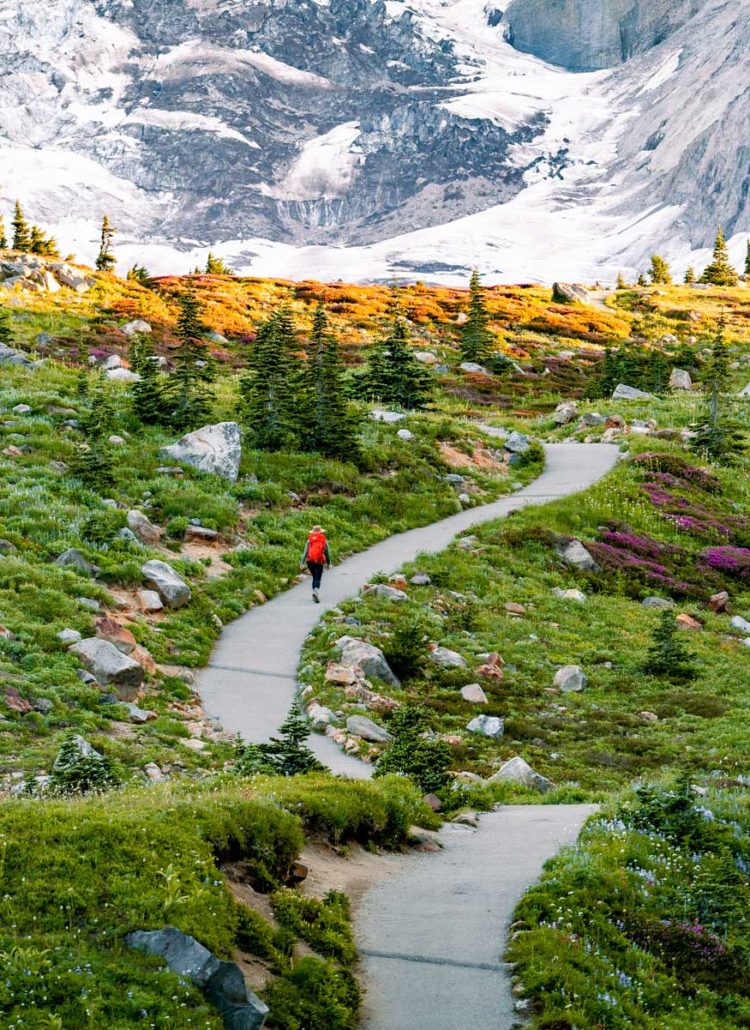
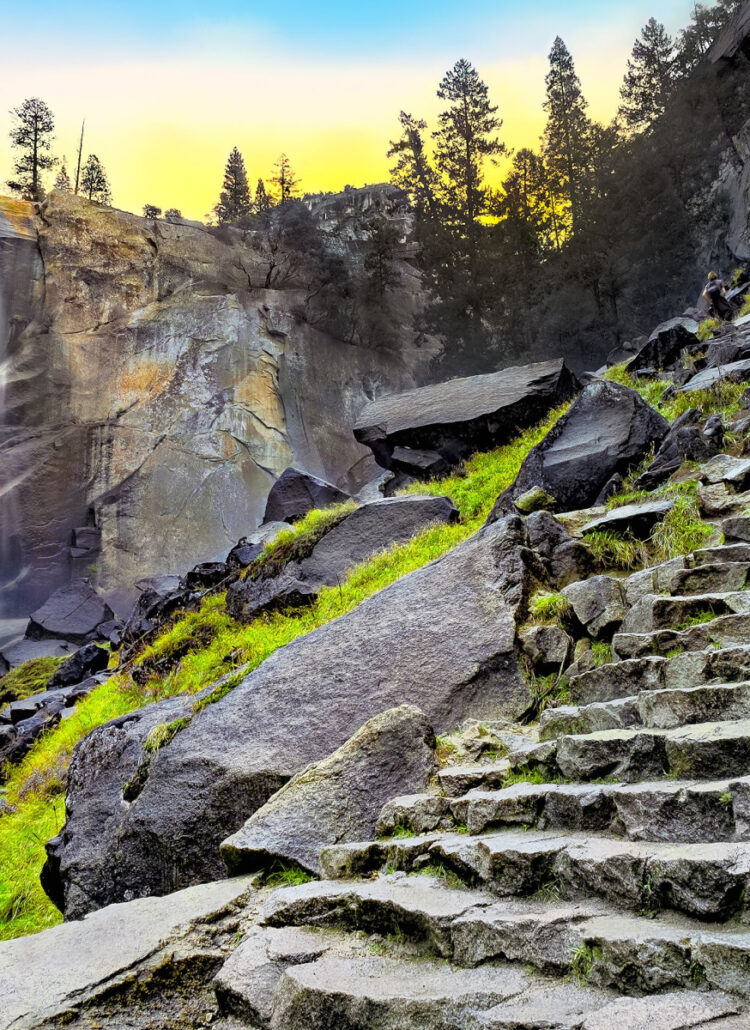
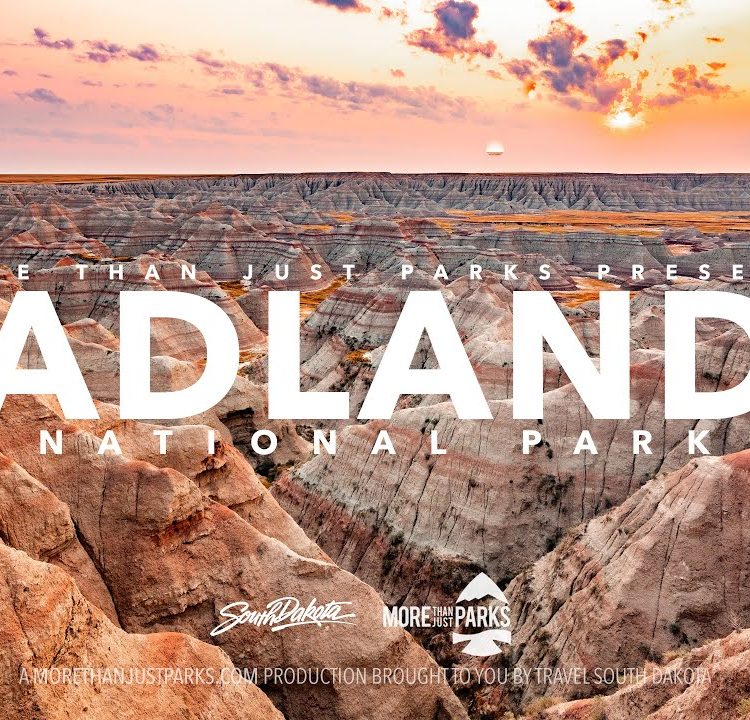
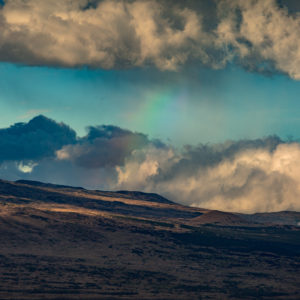

Leave a Reply